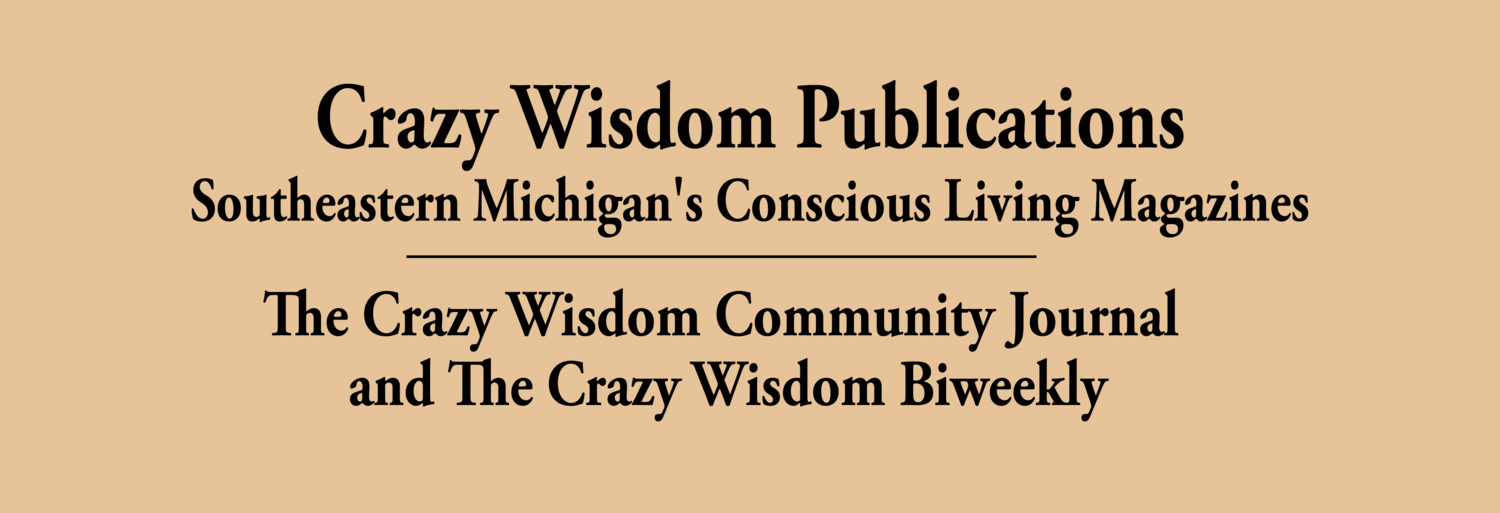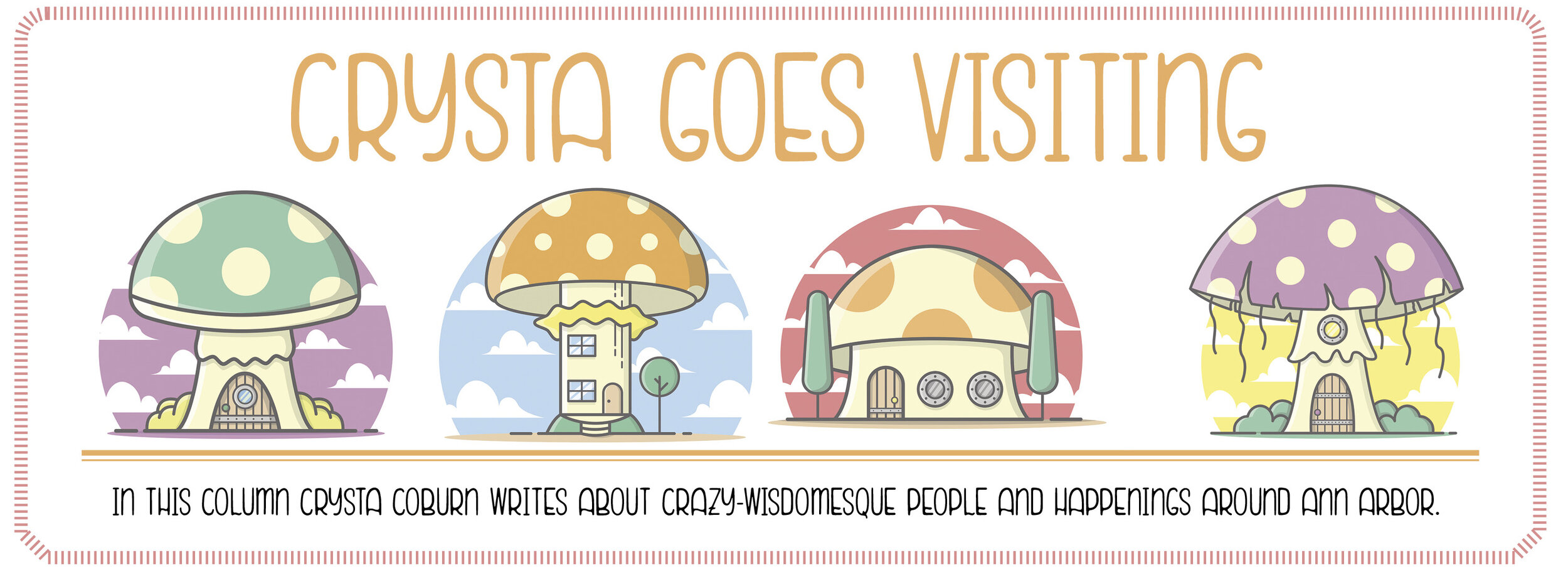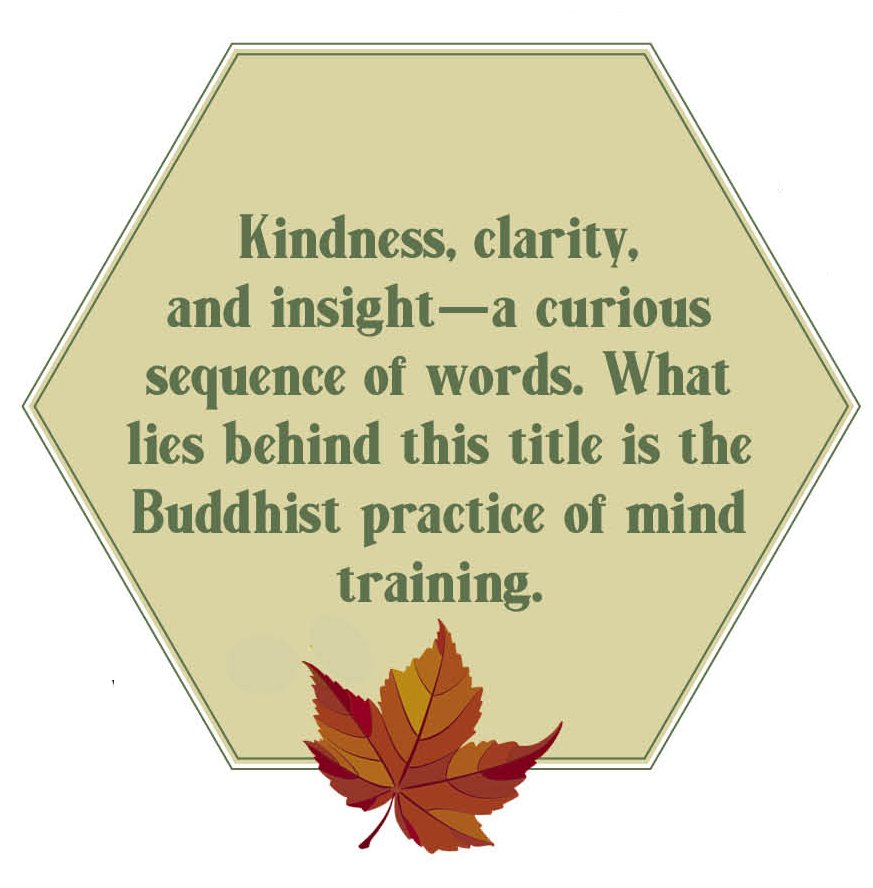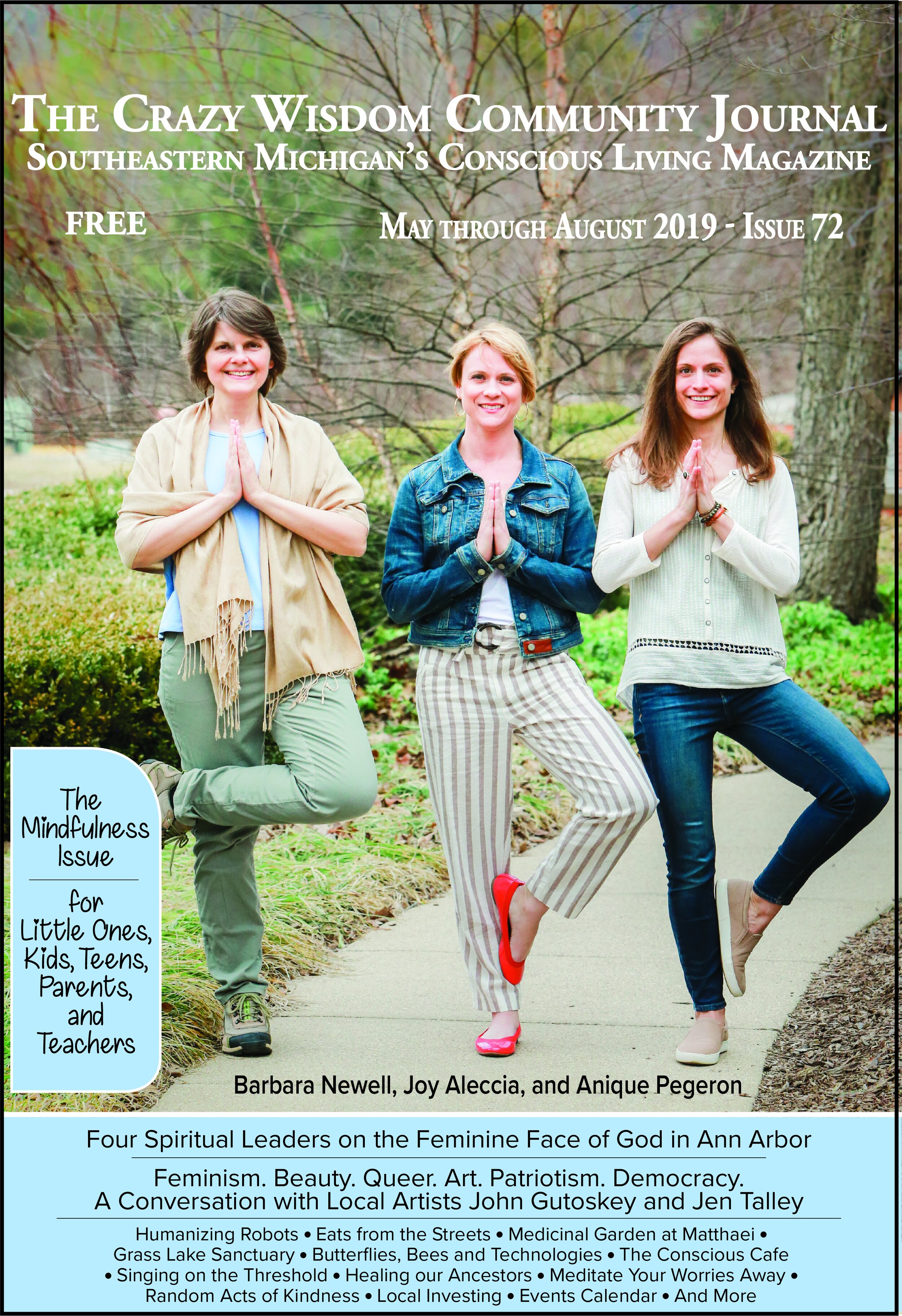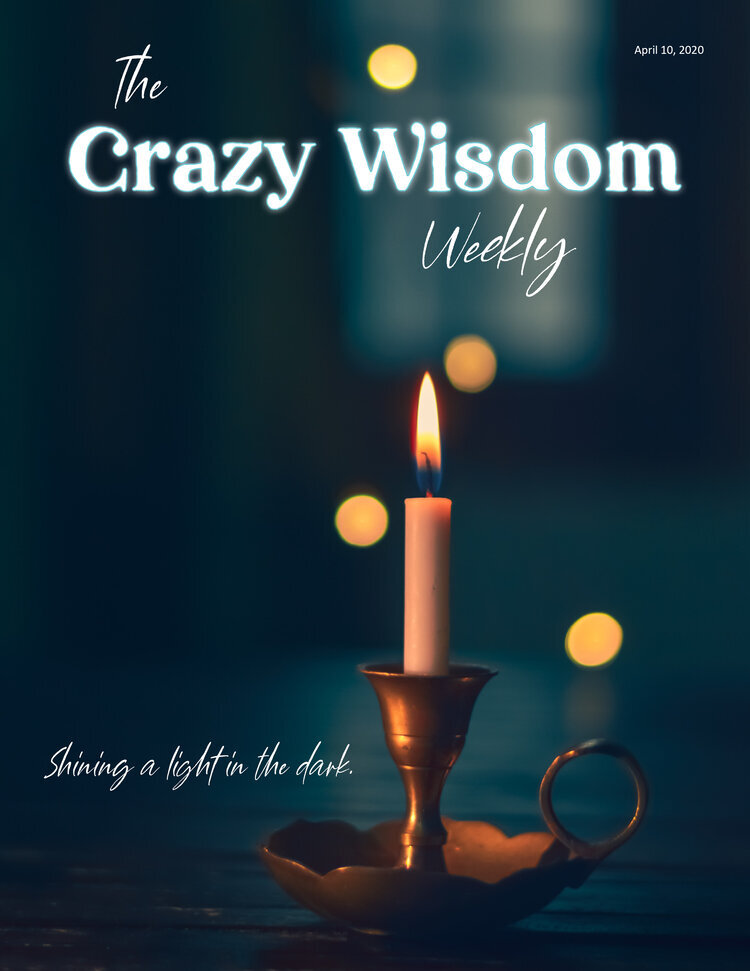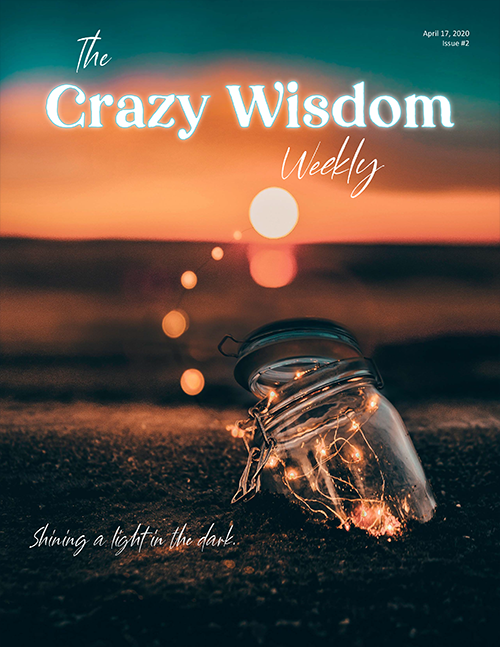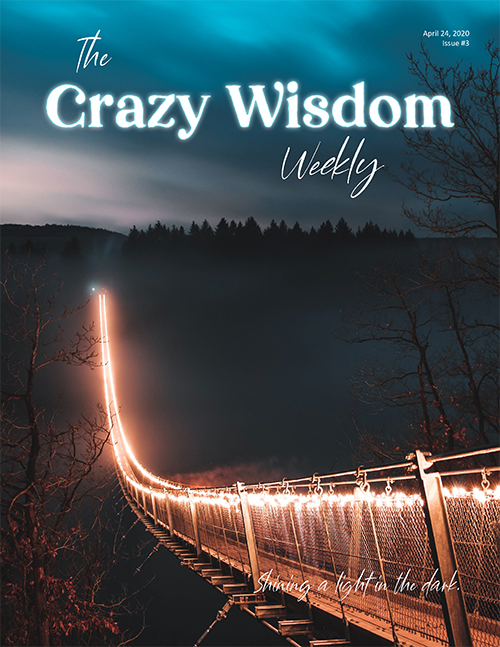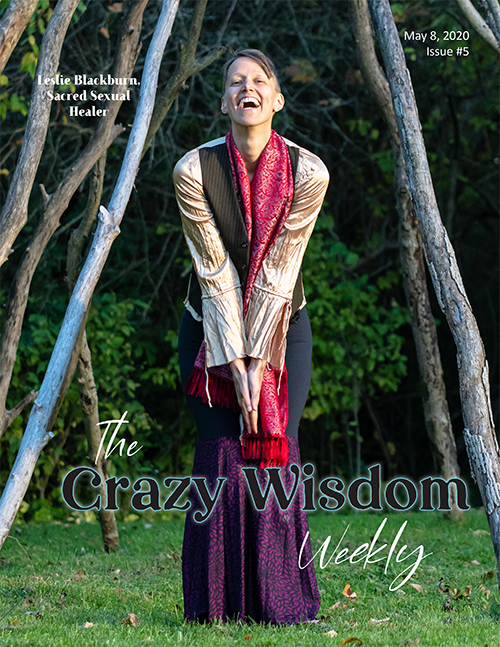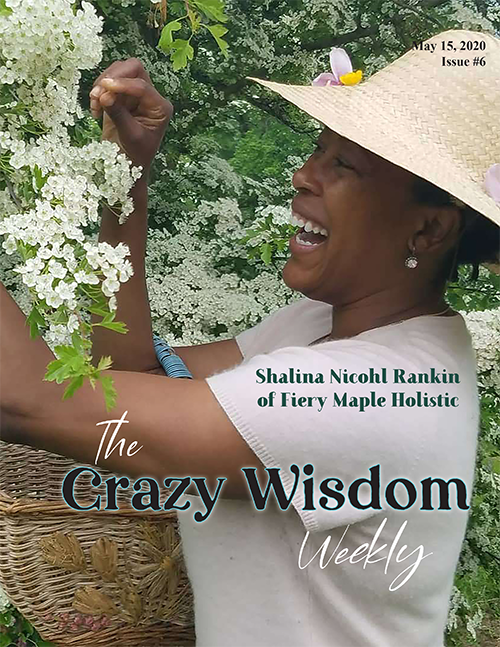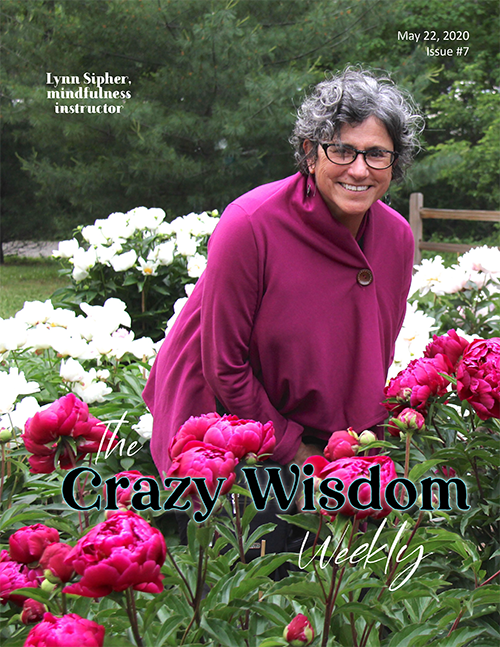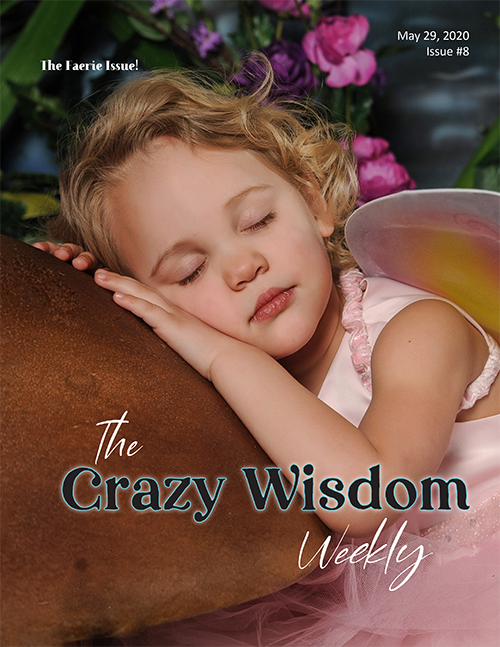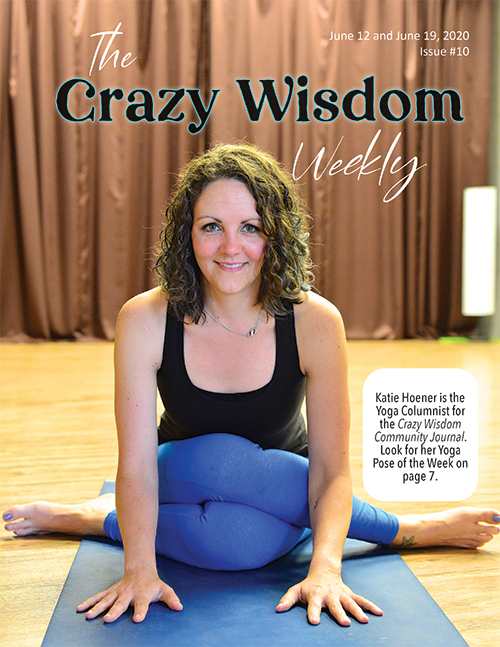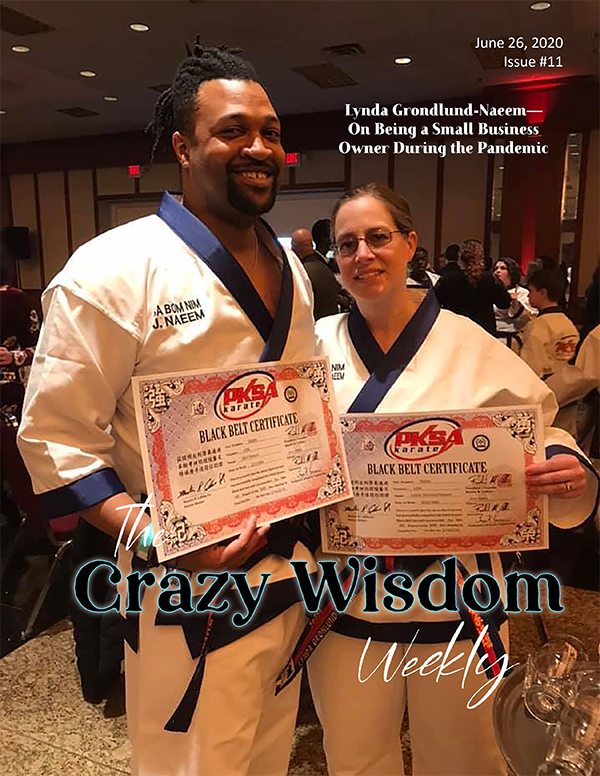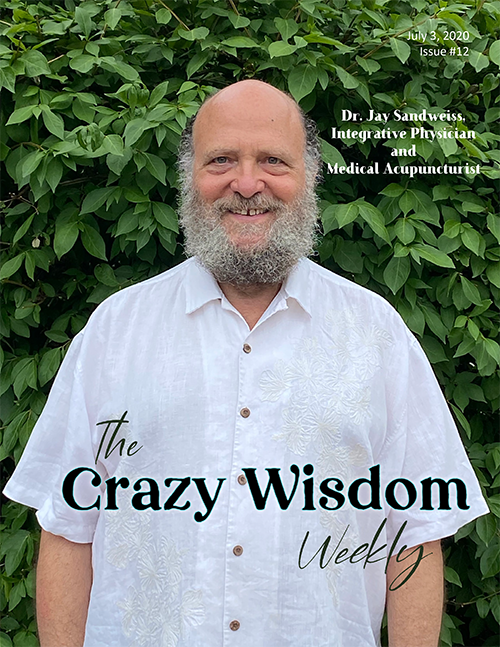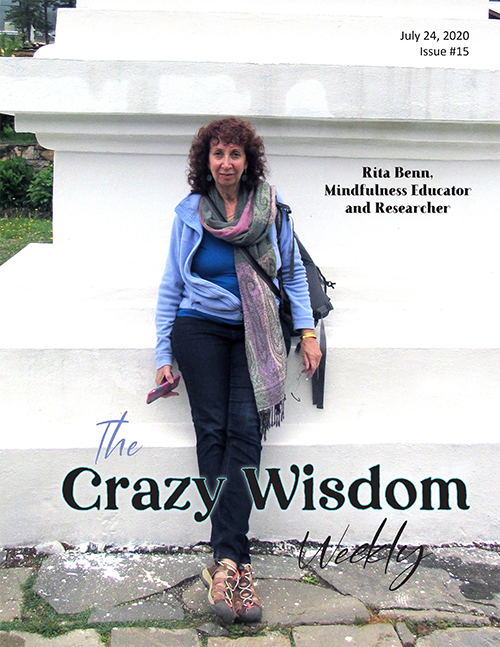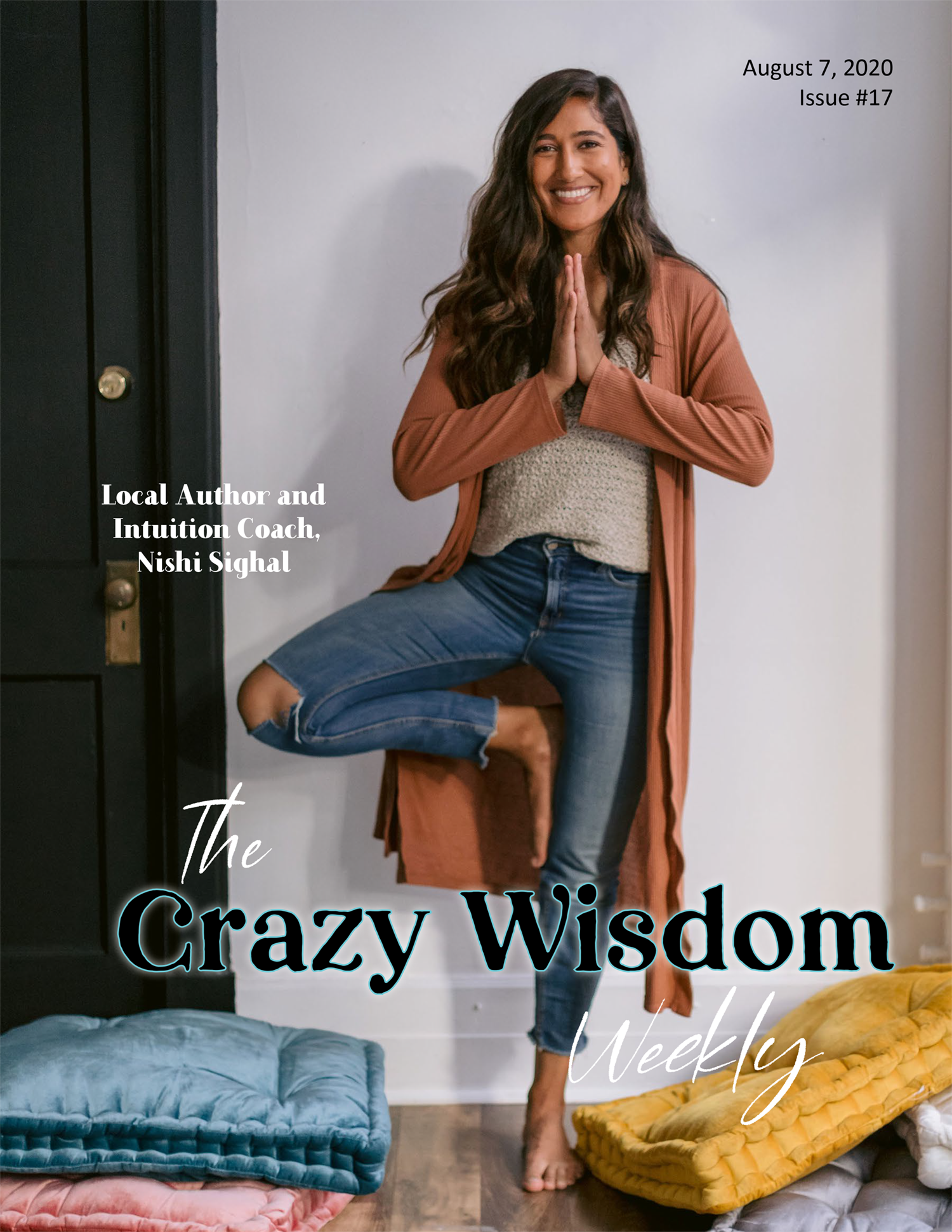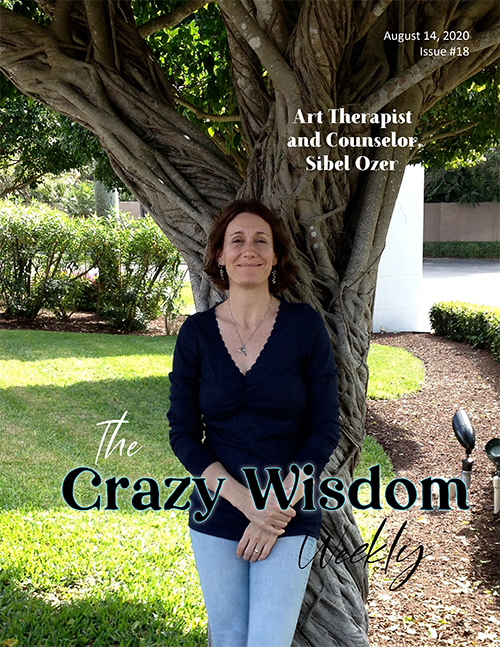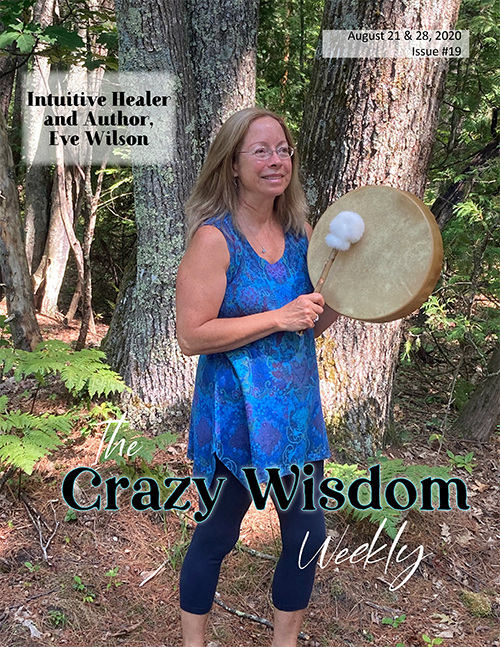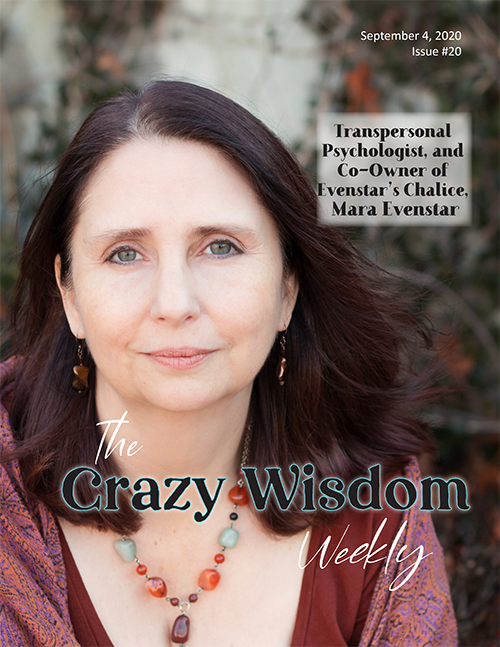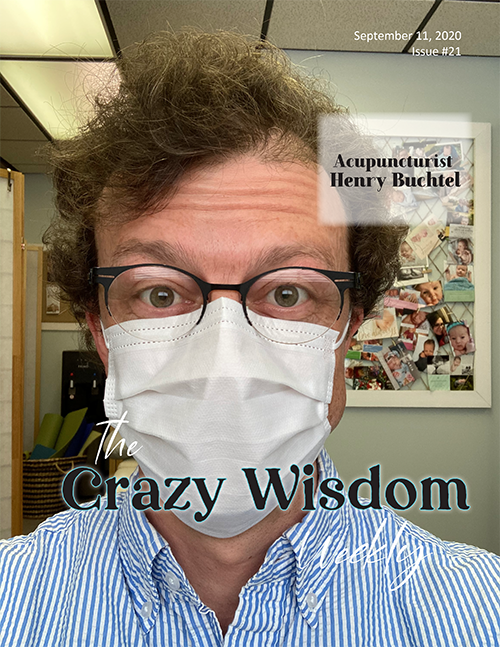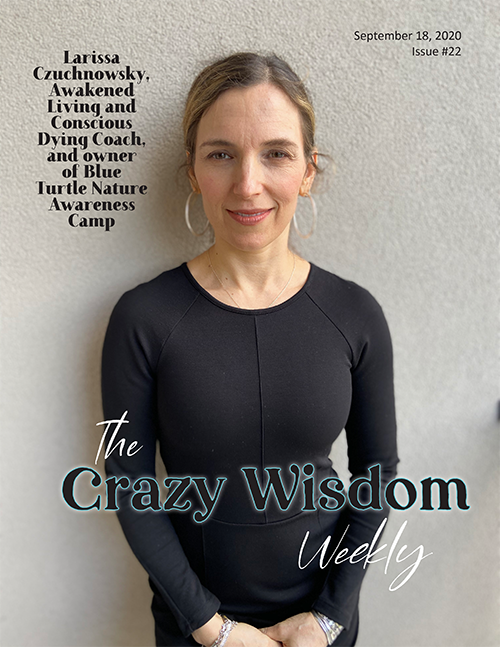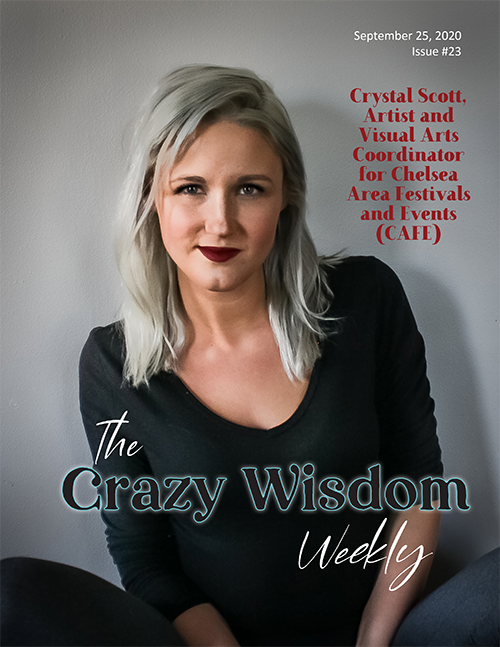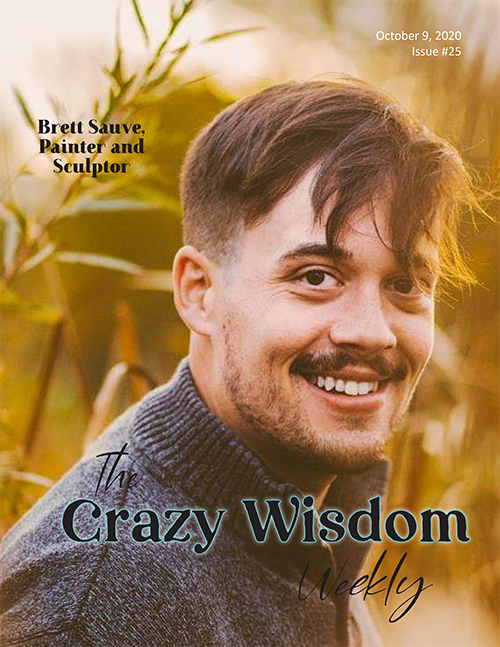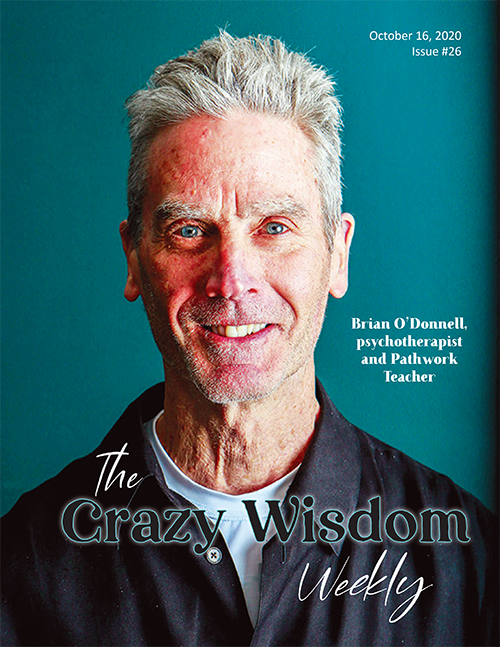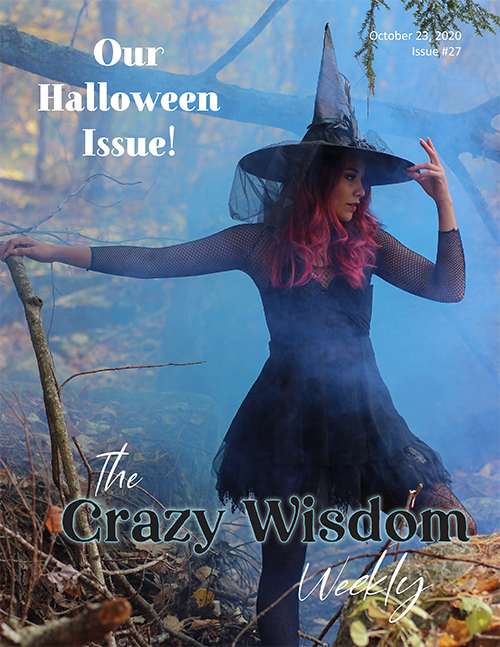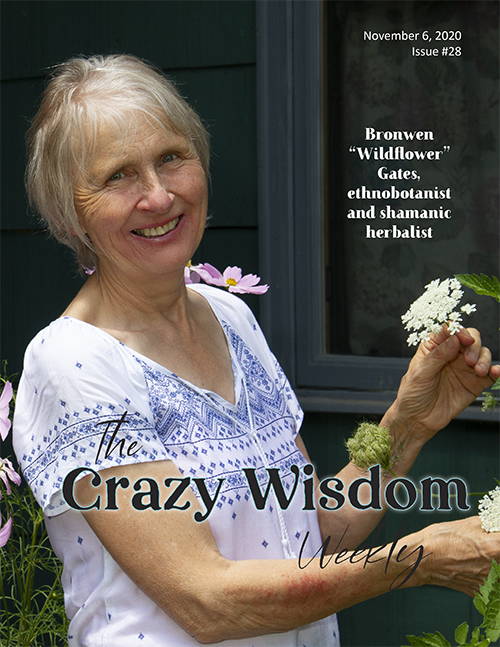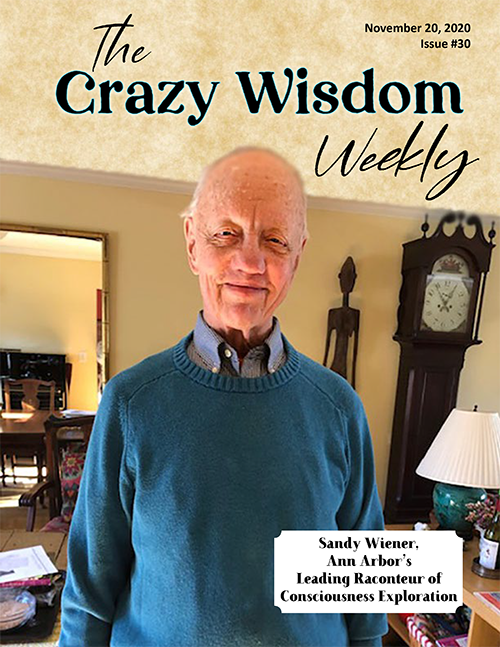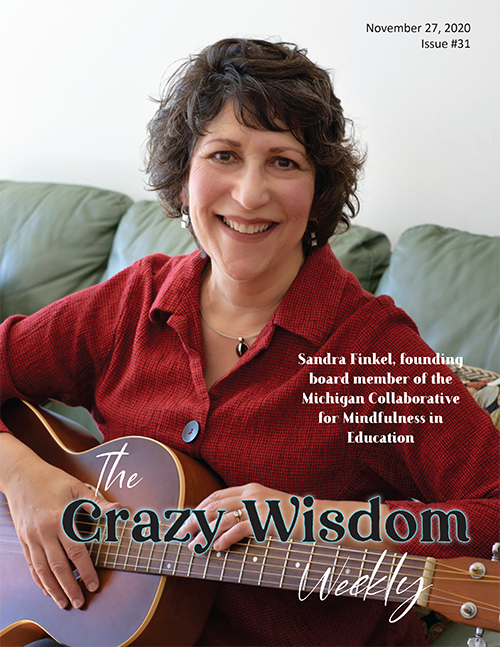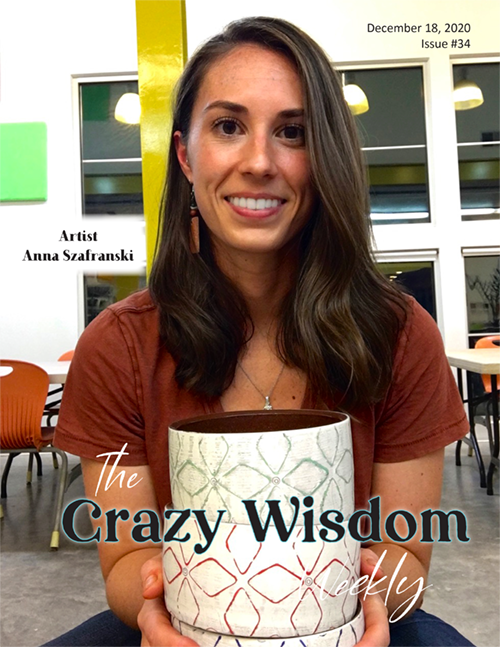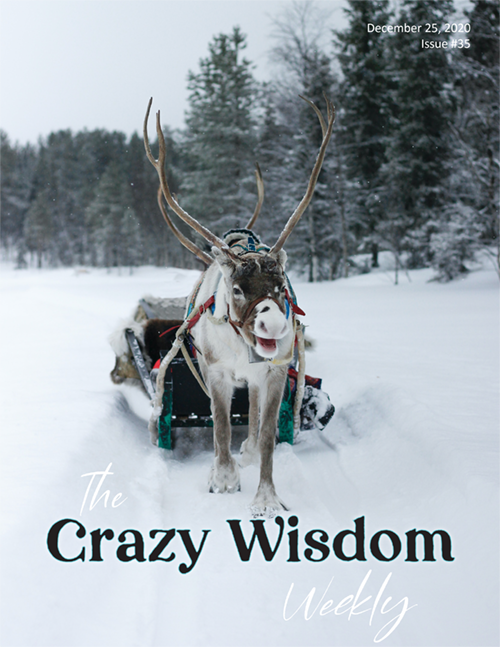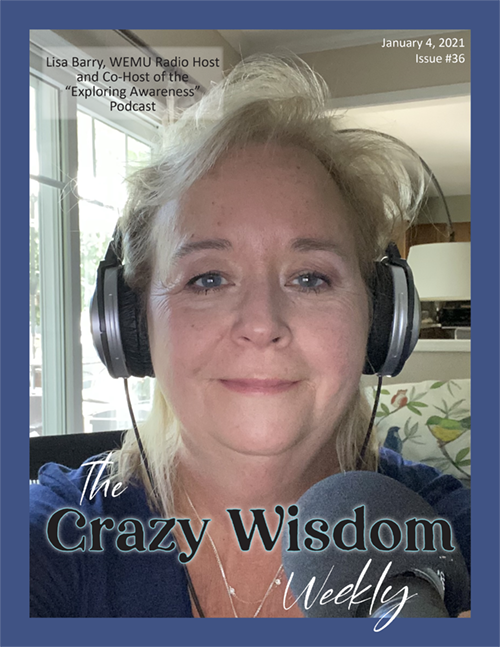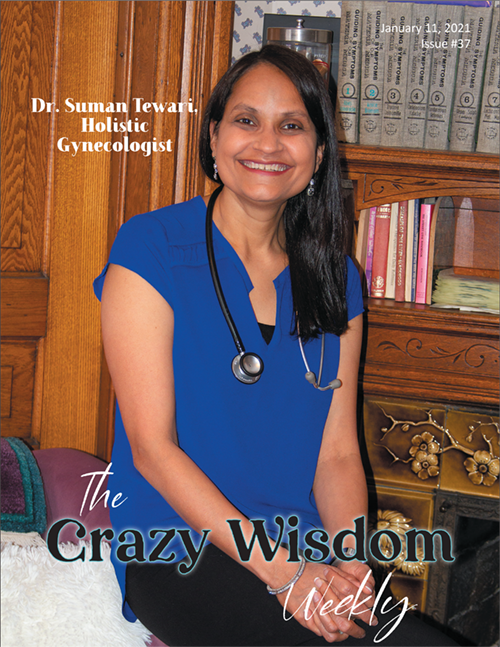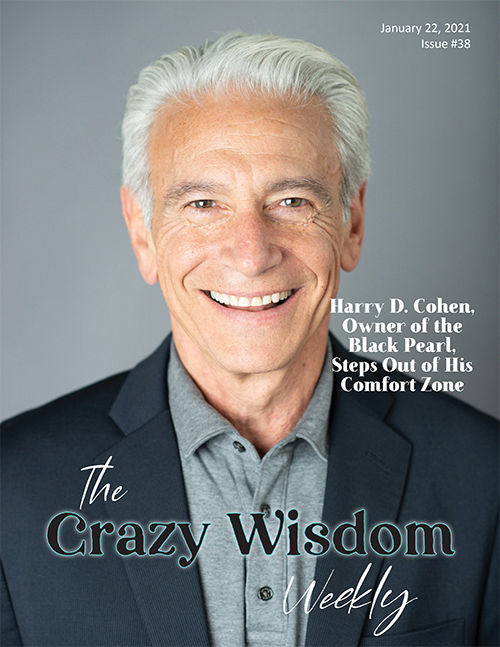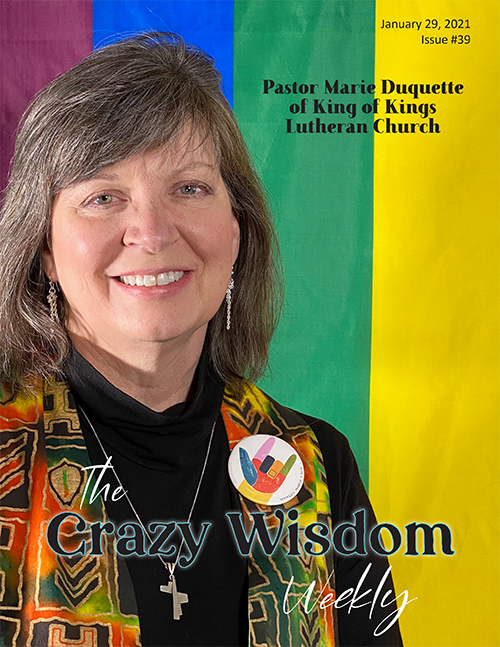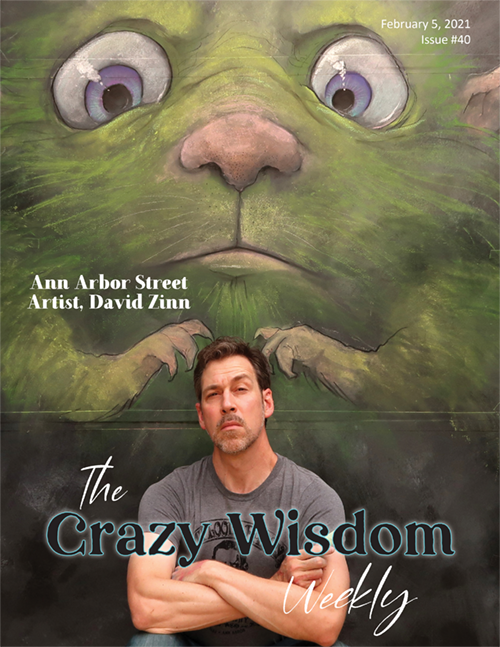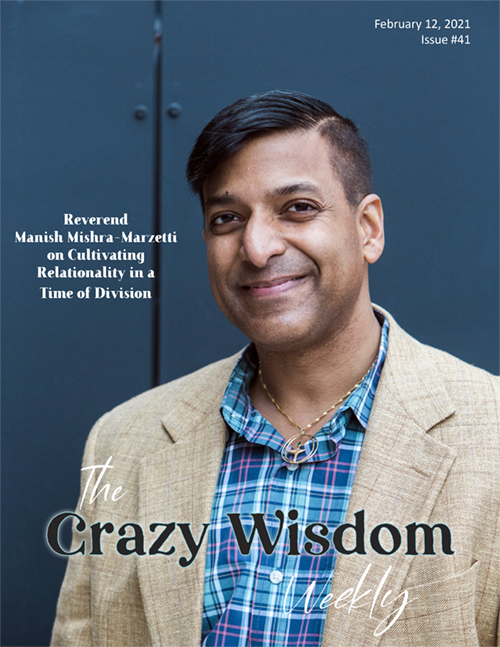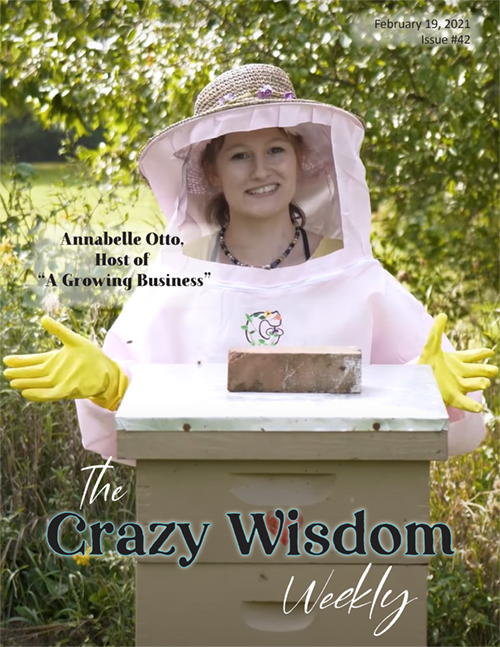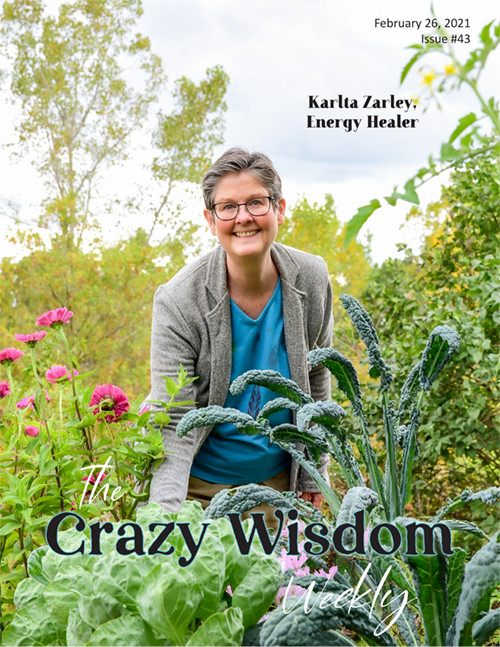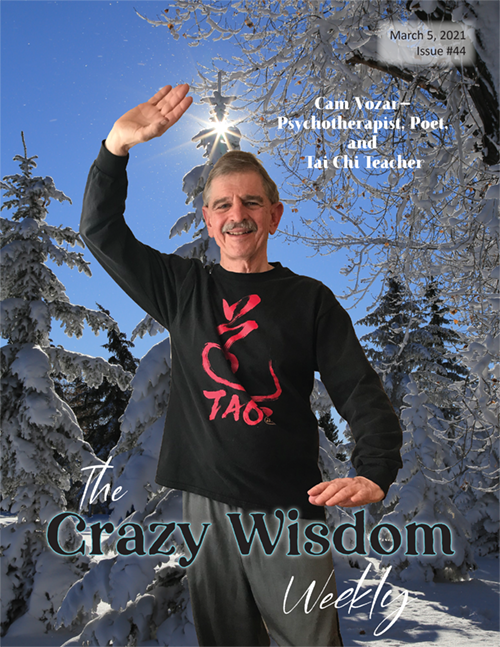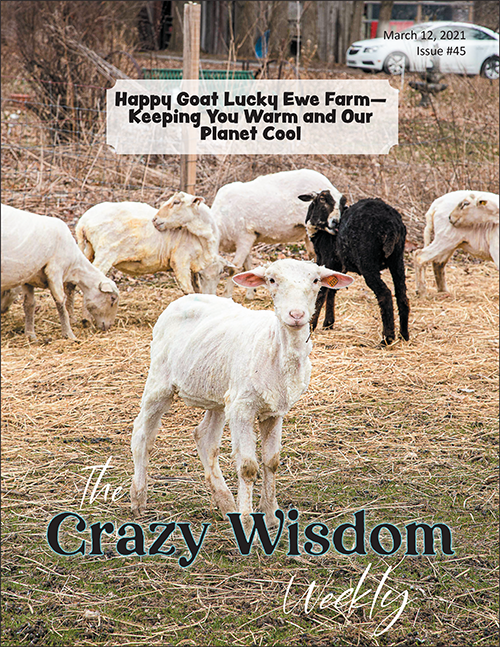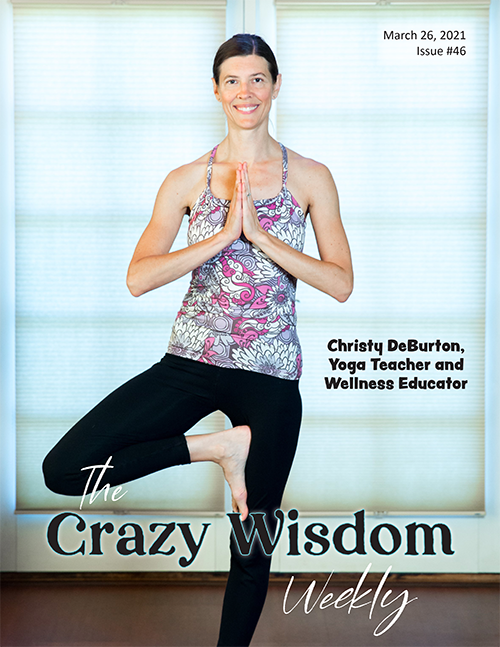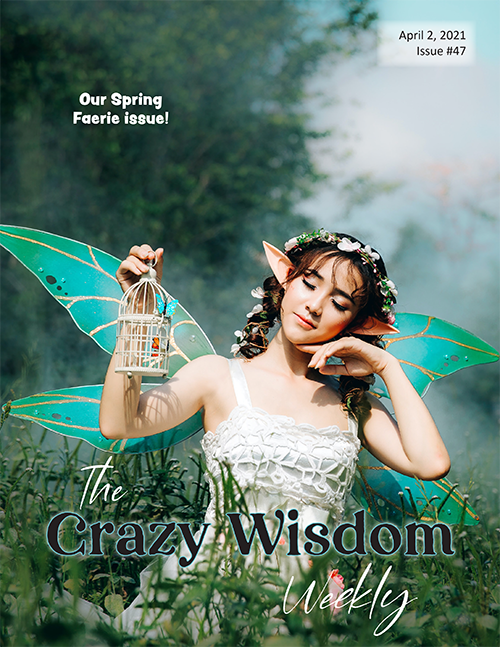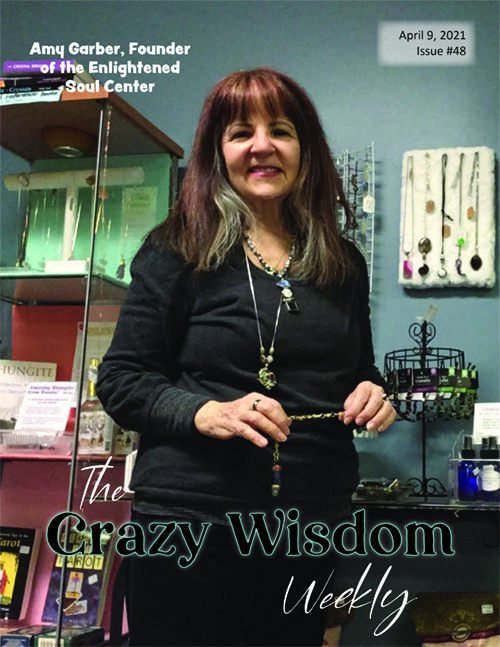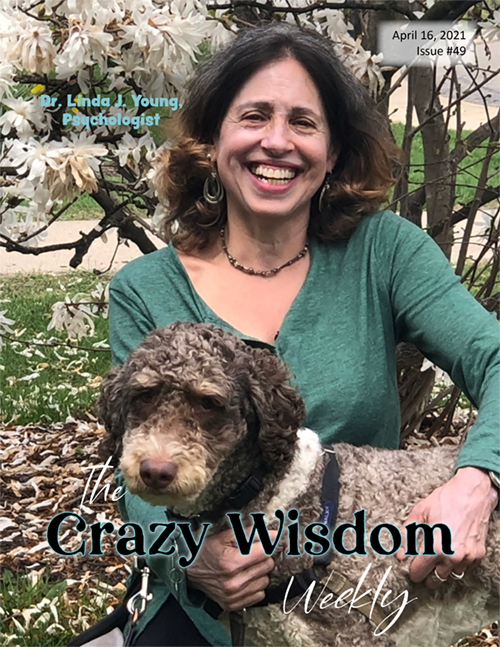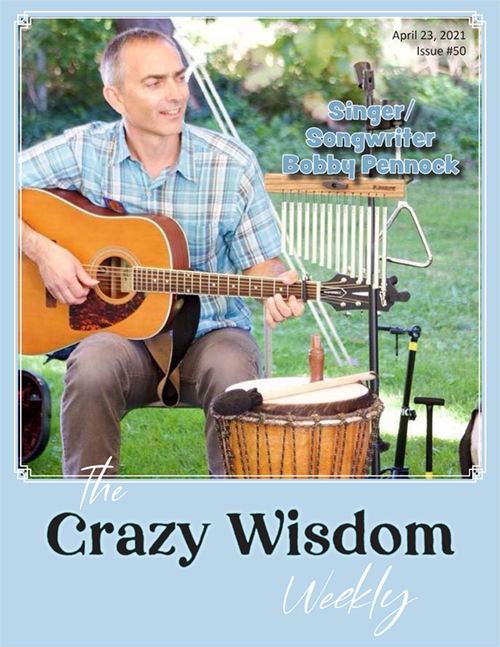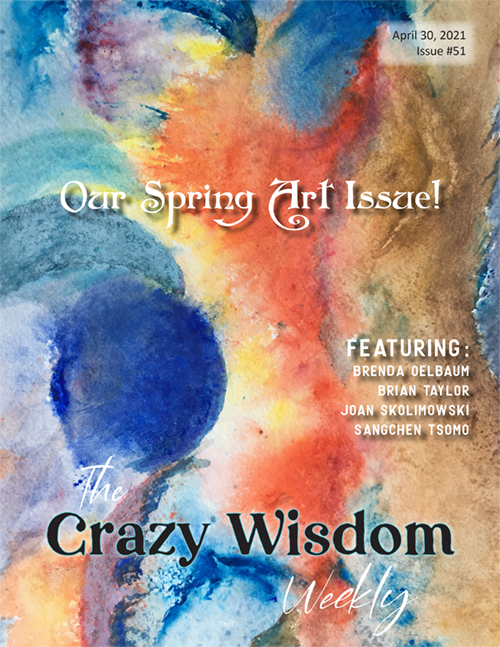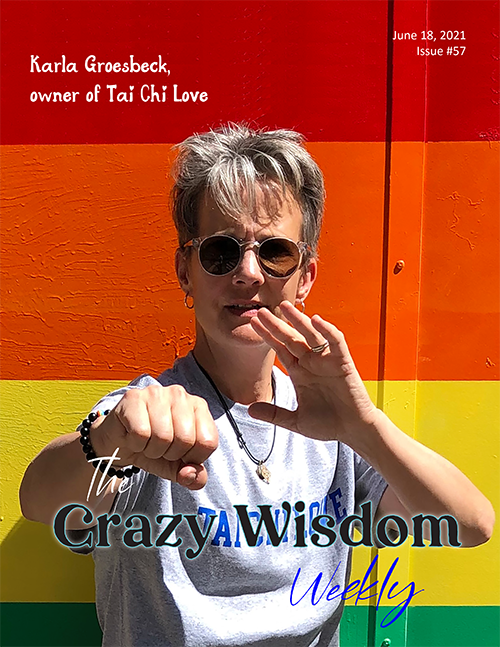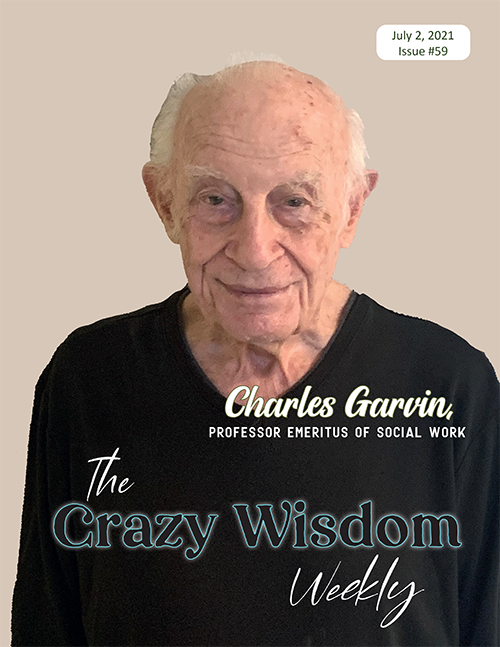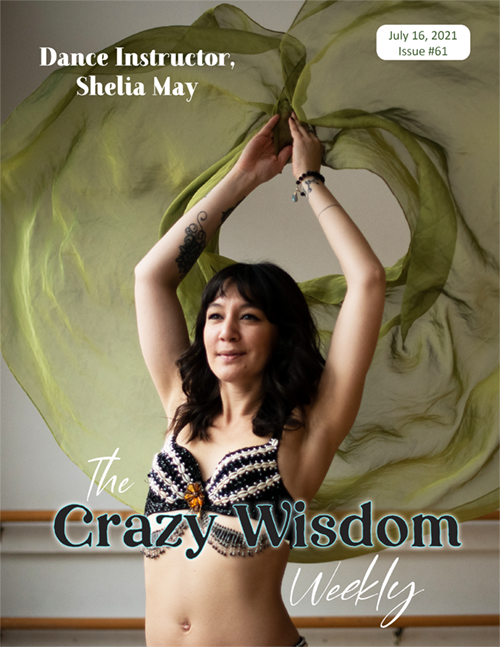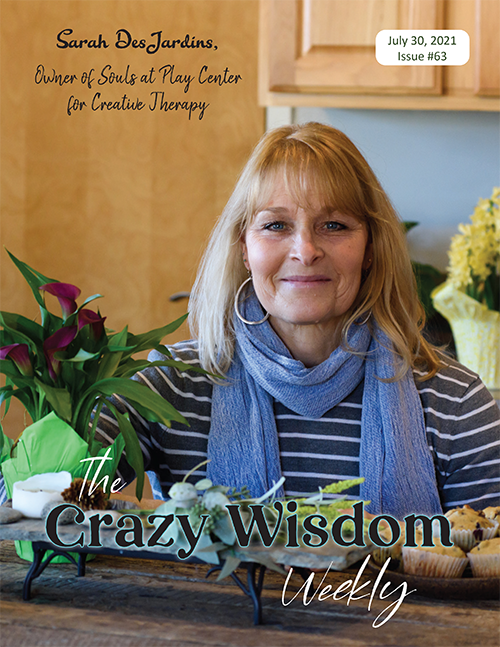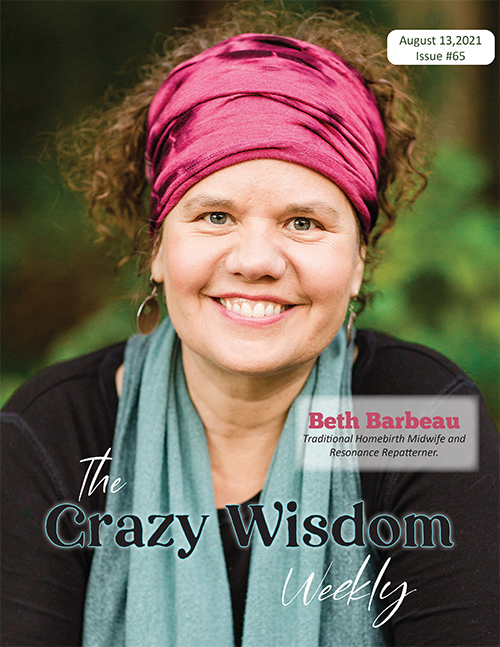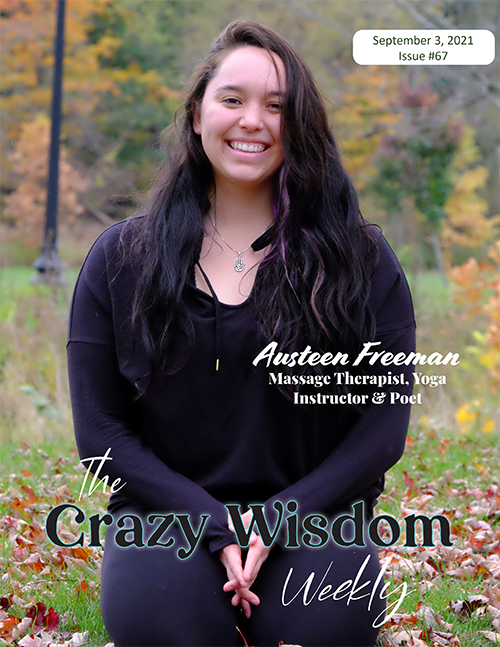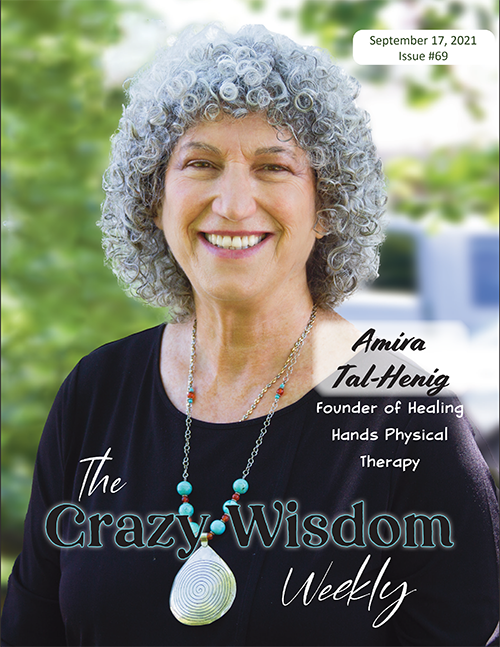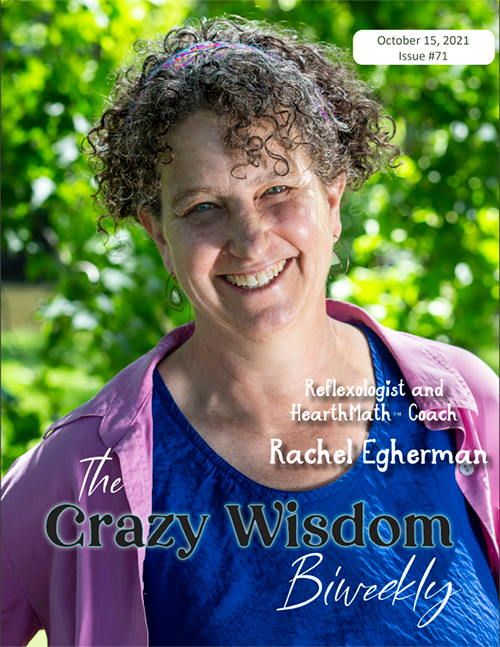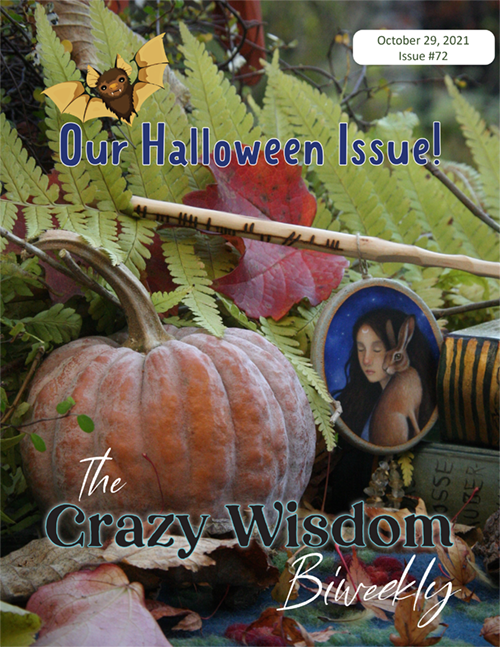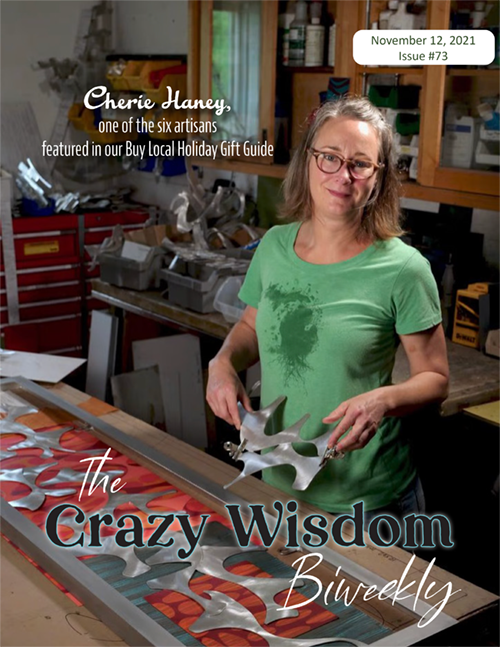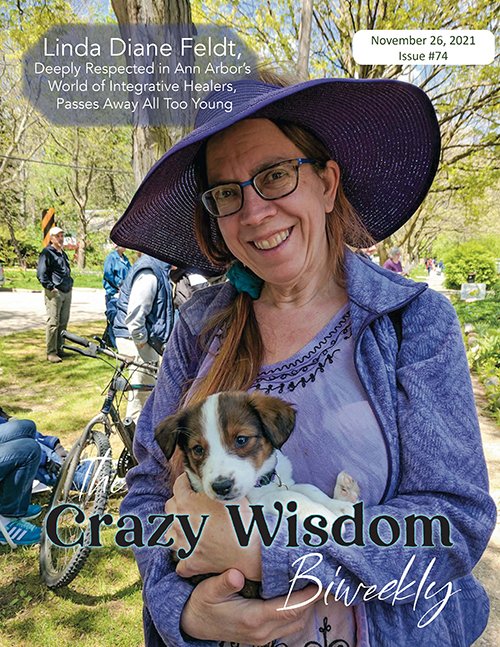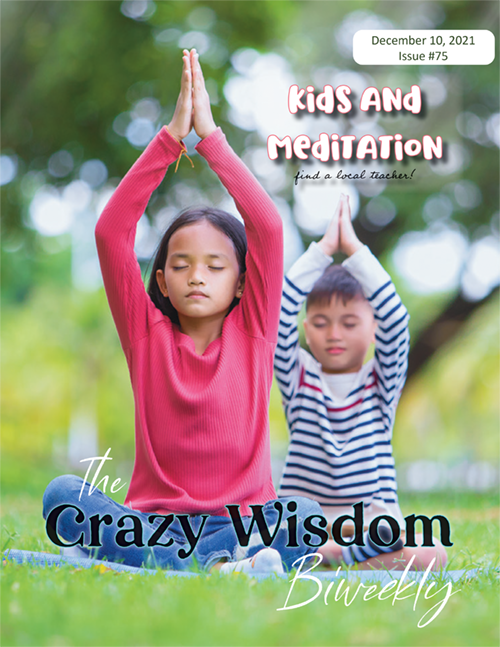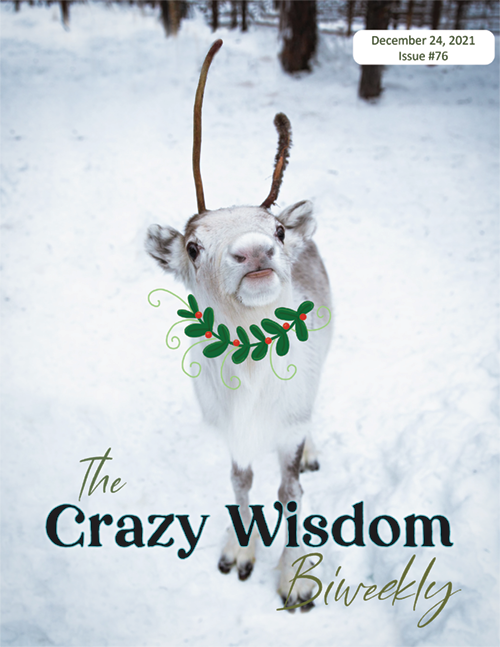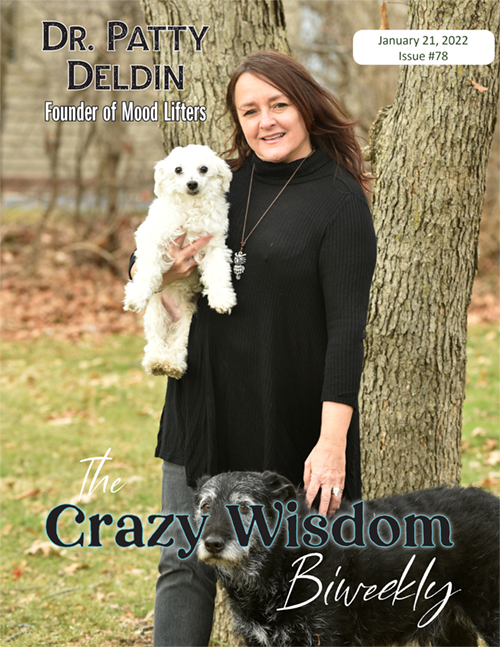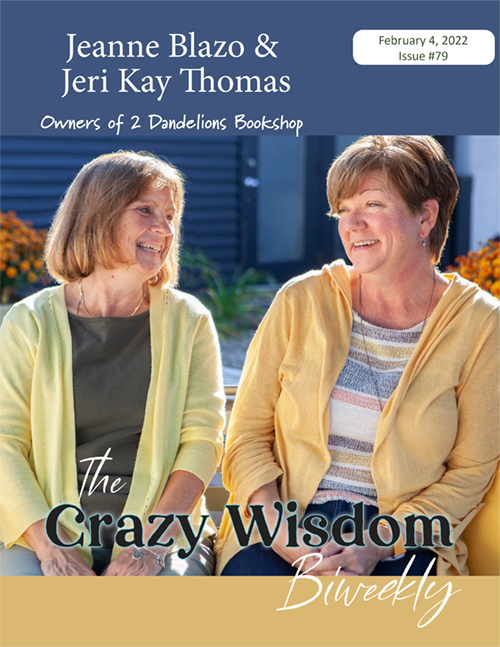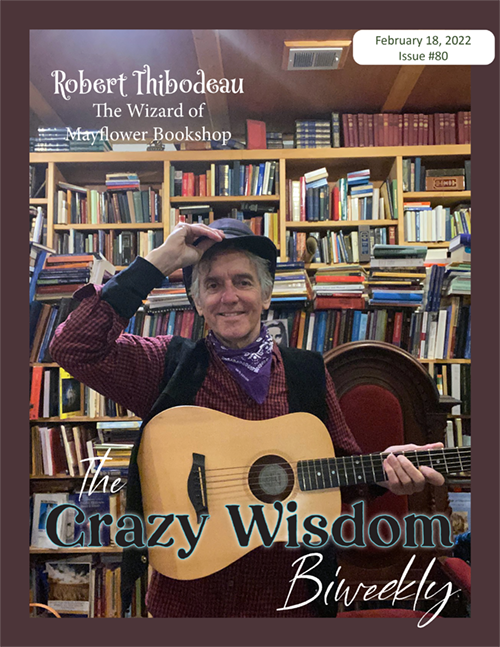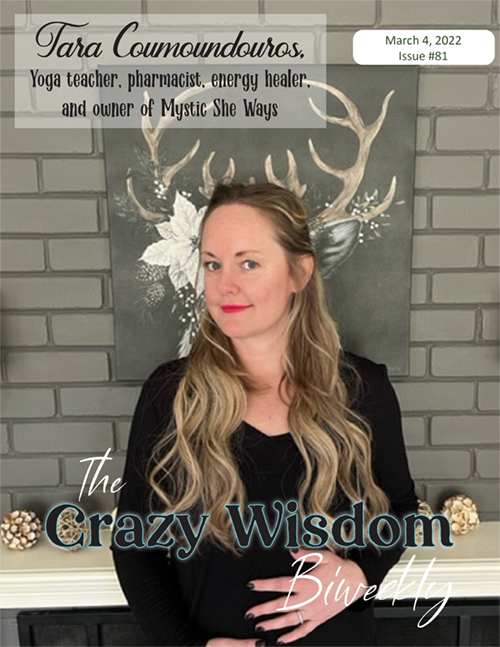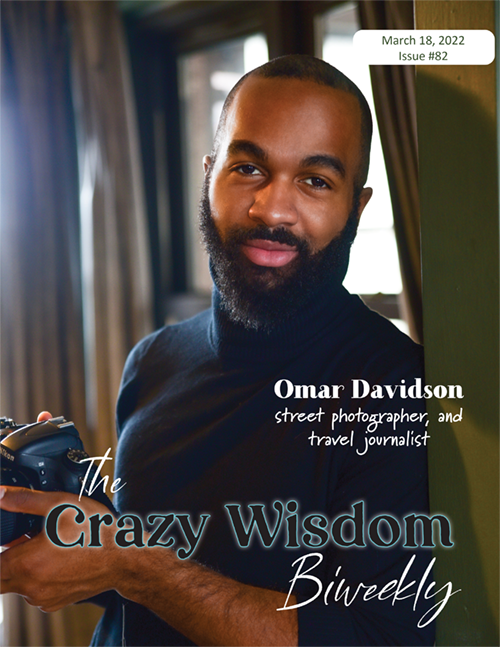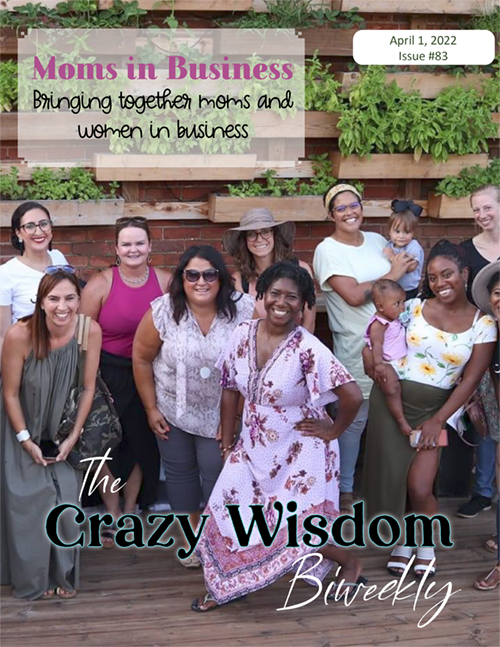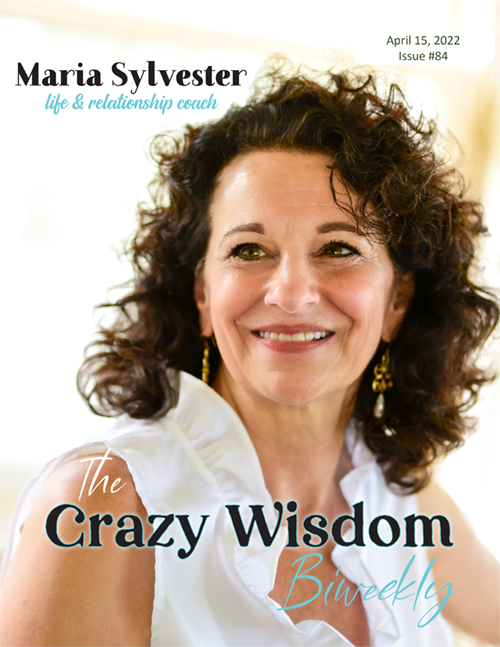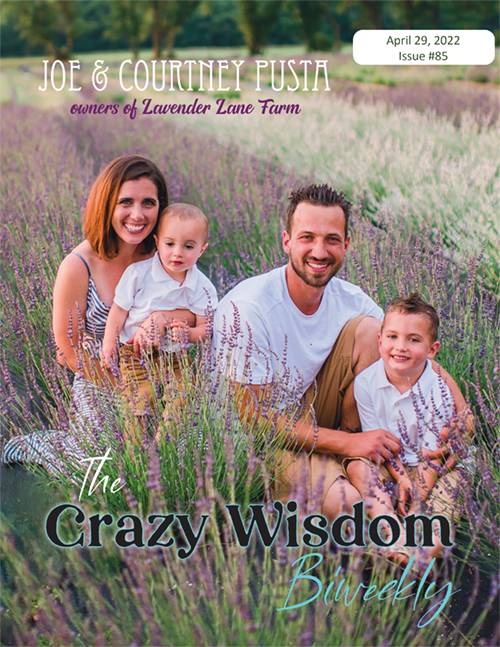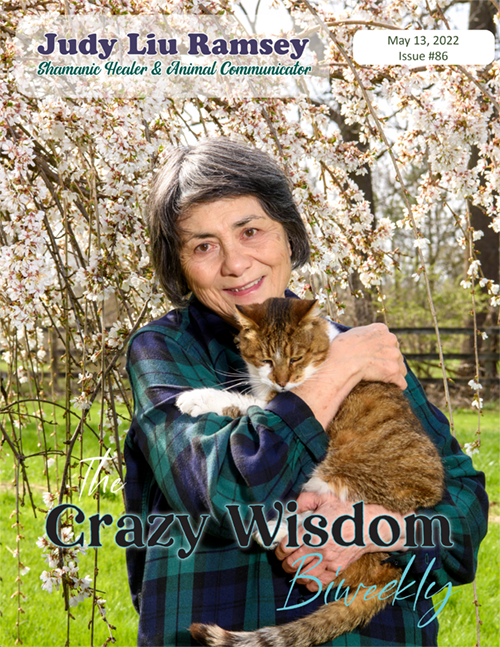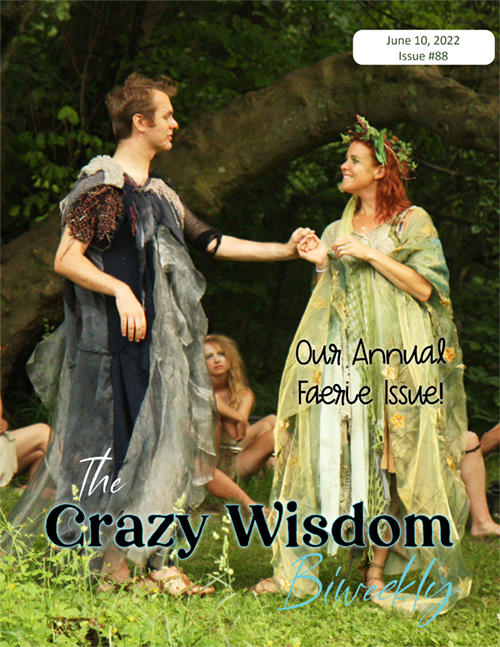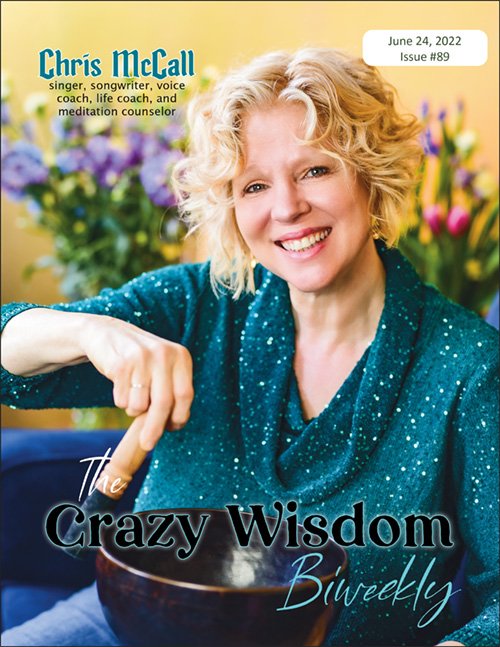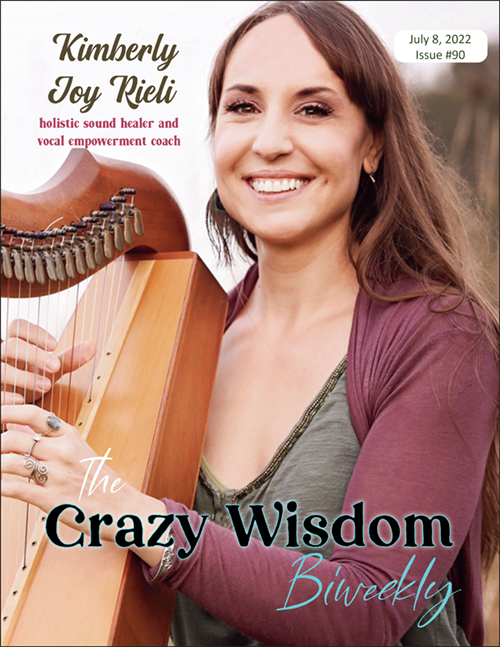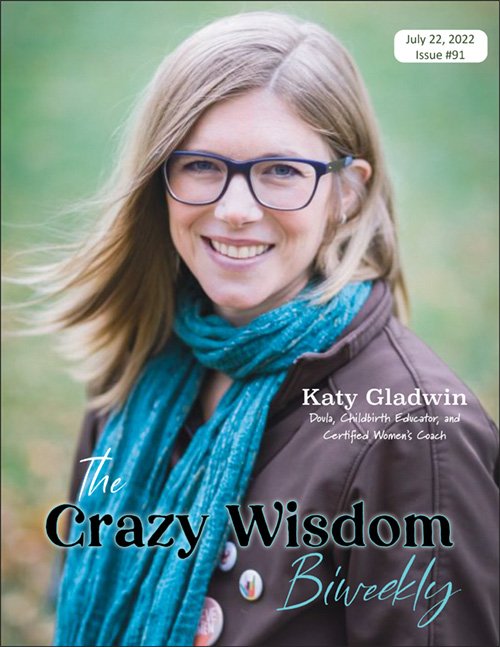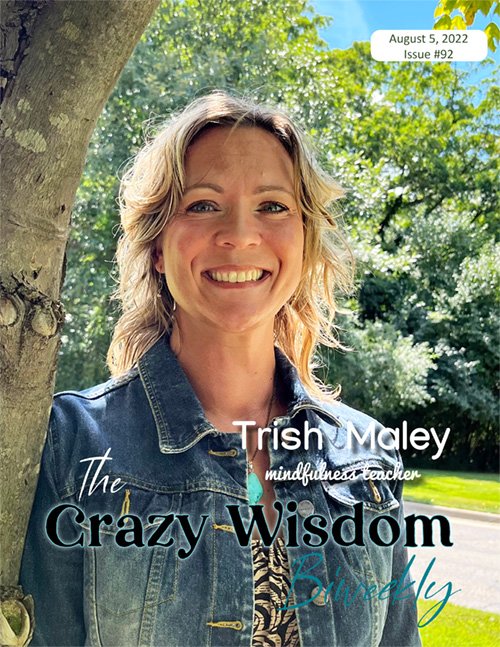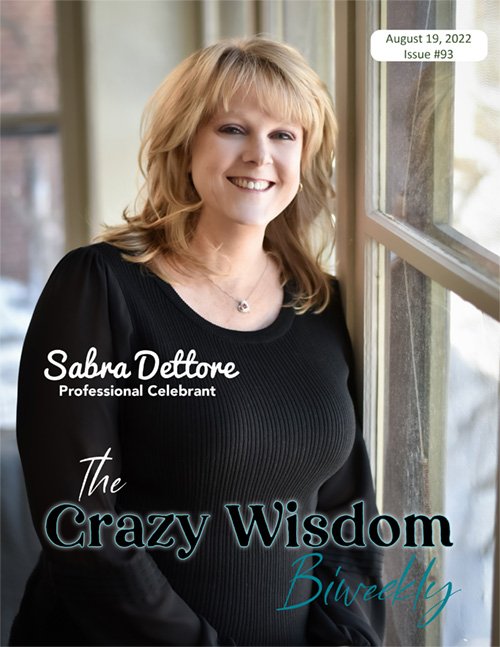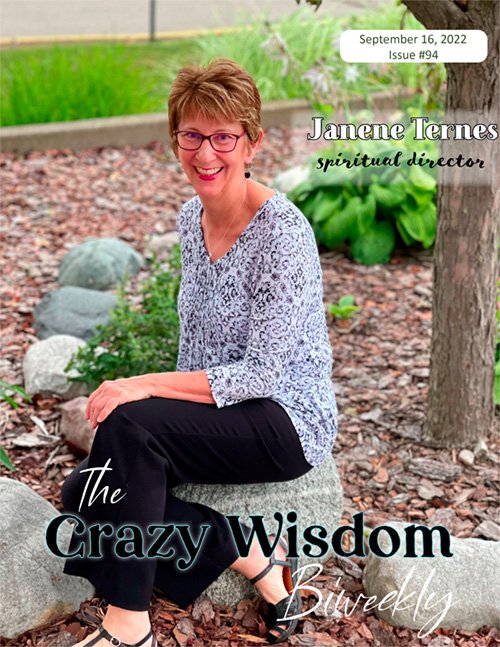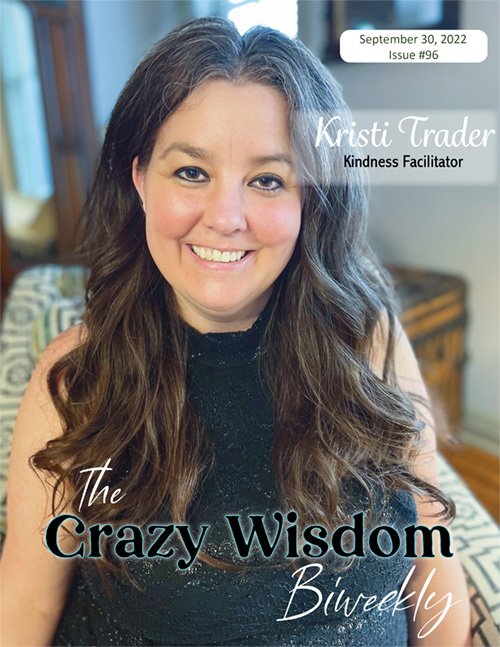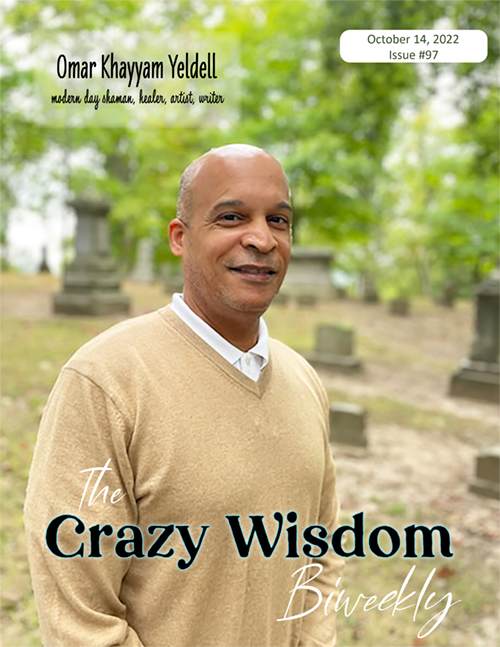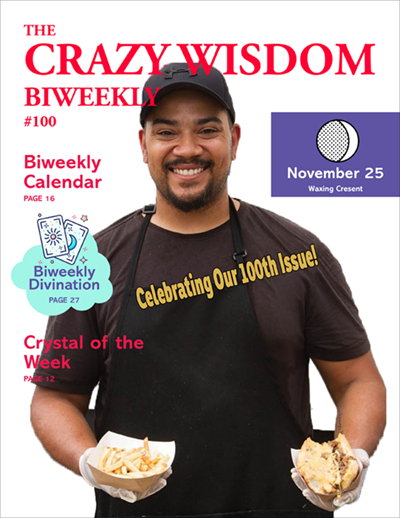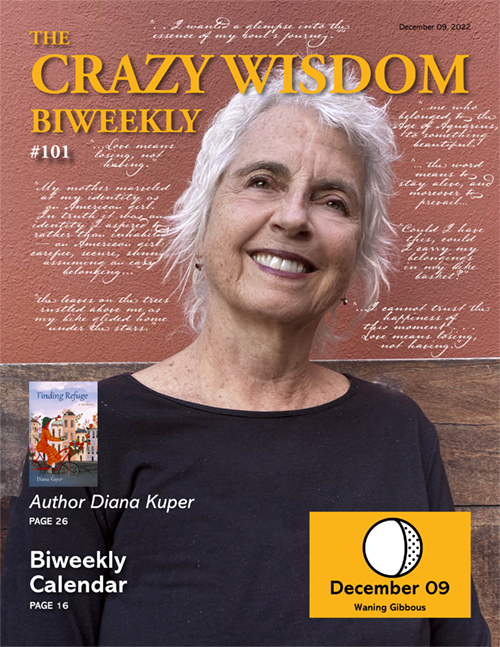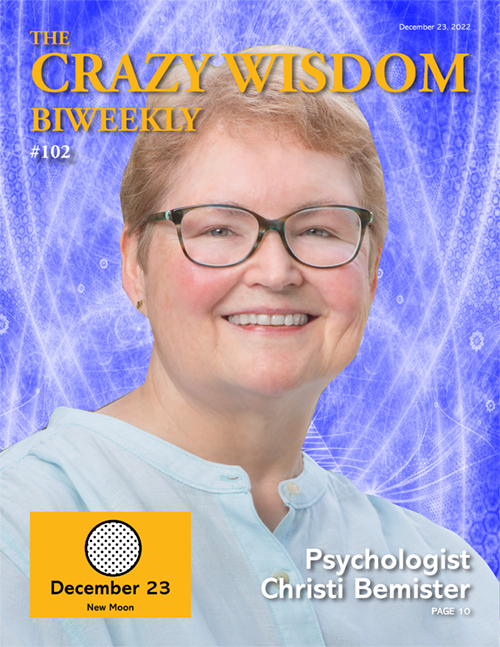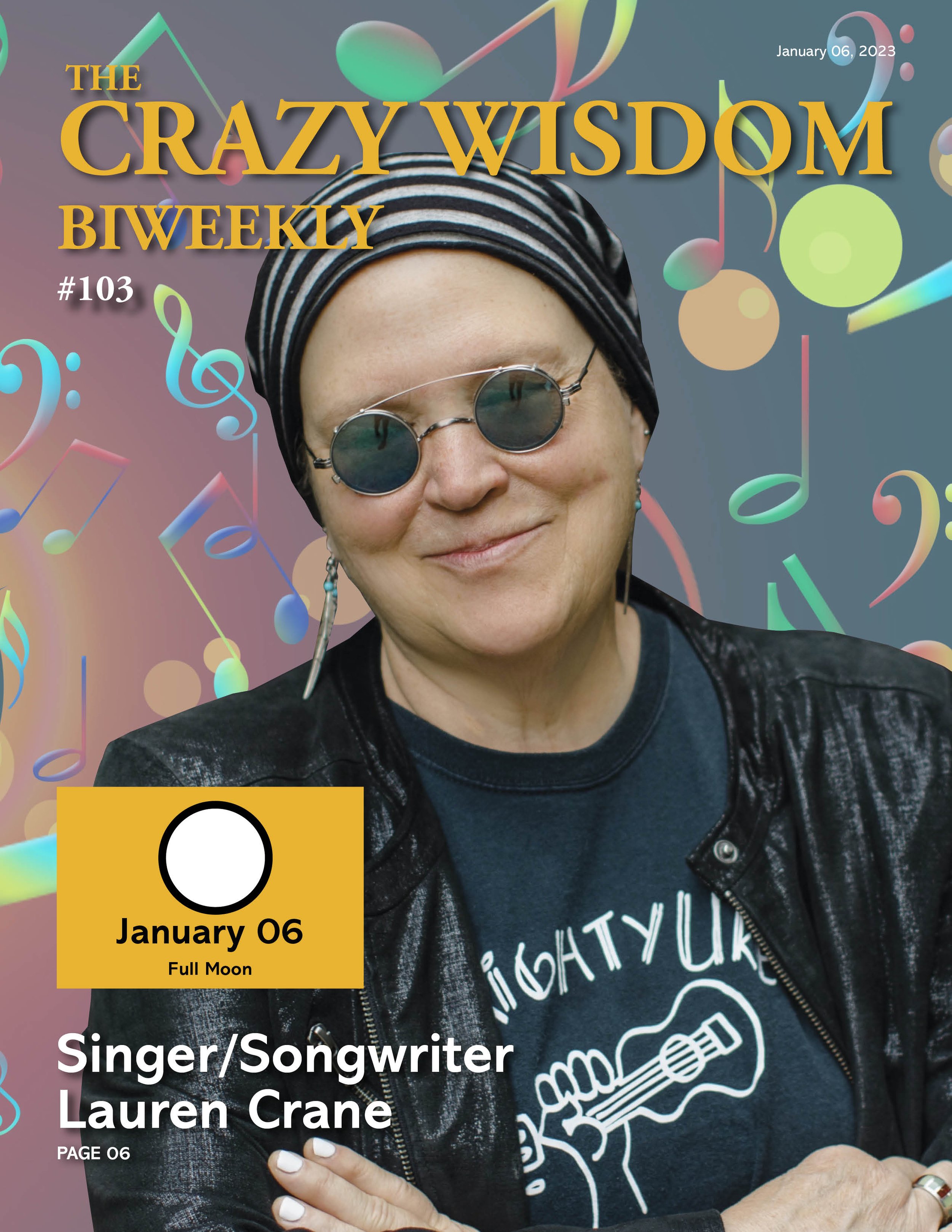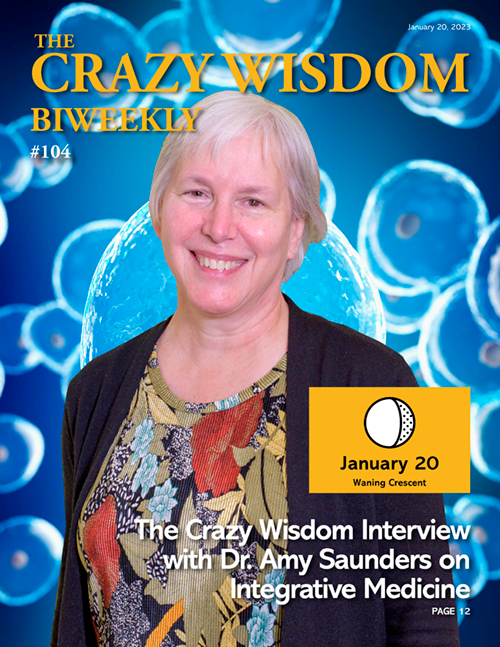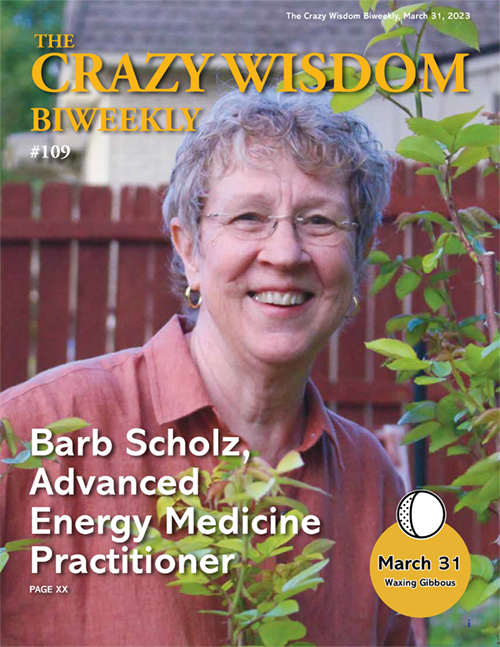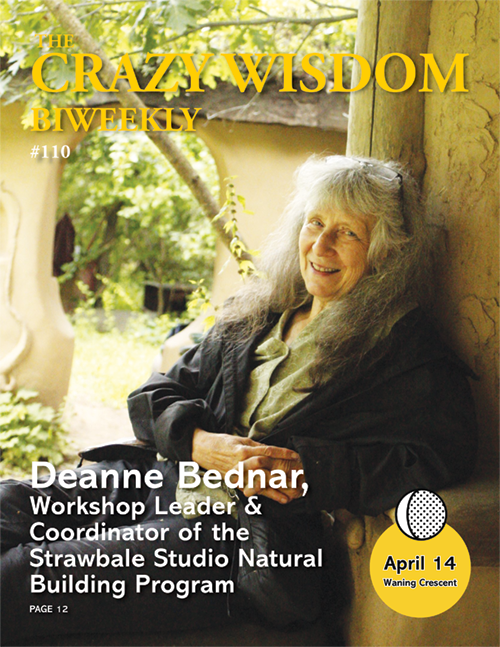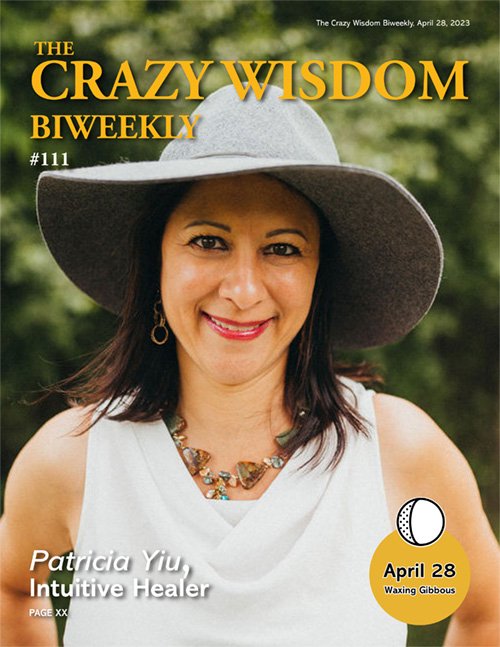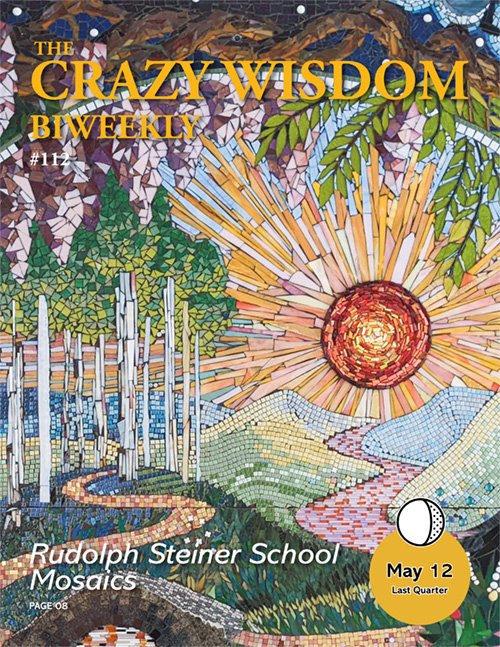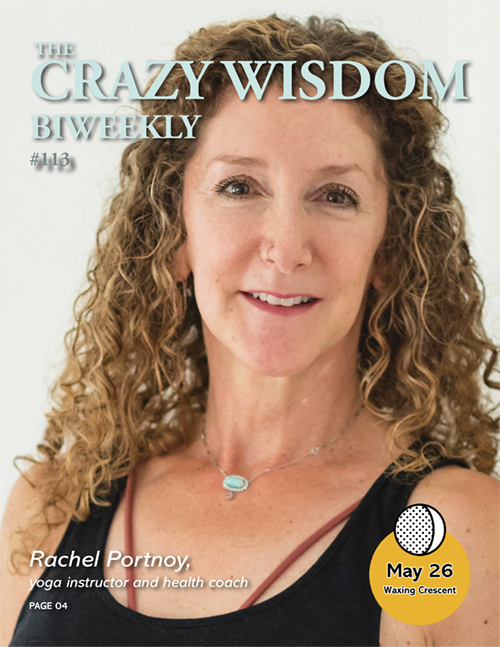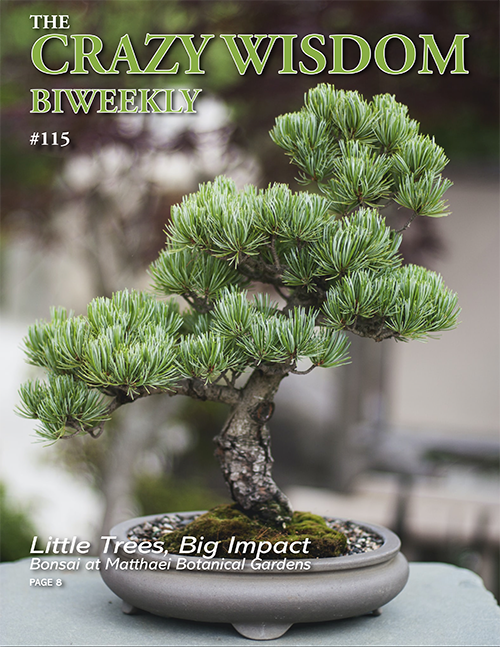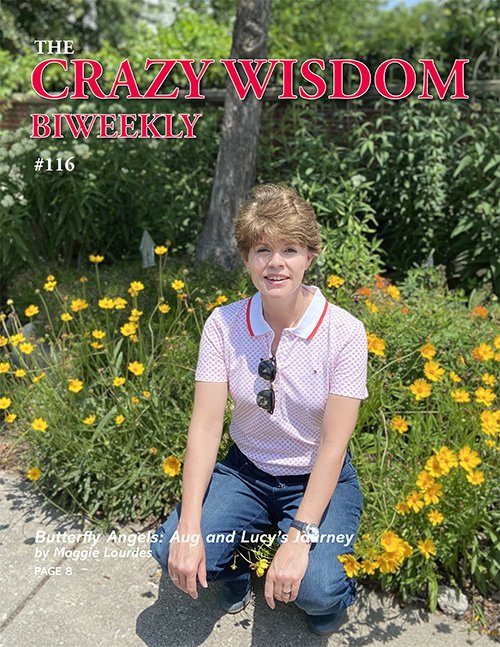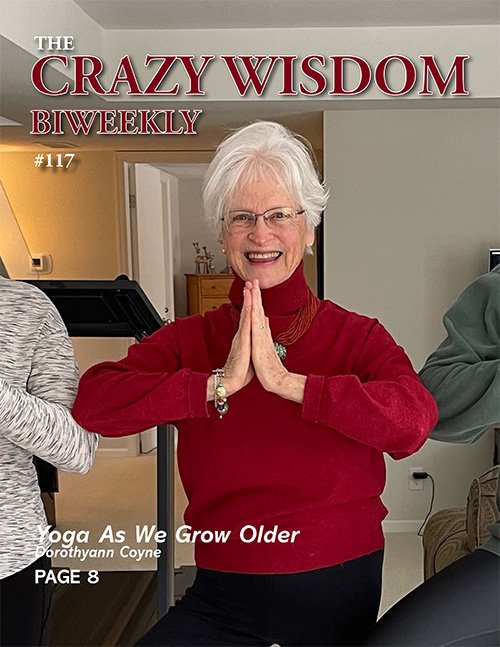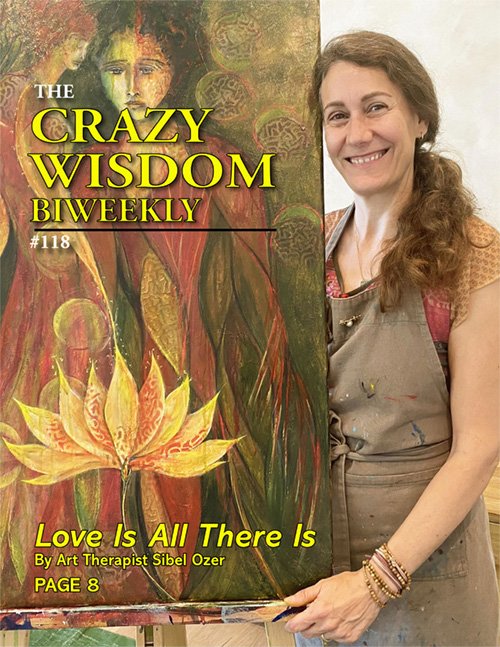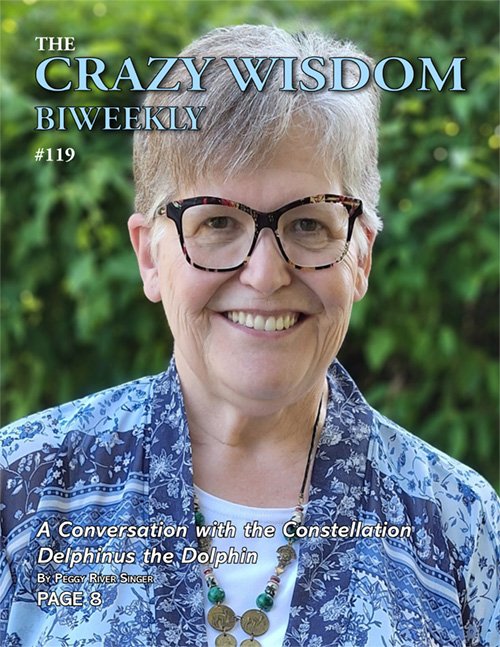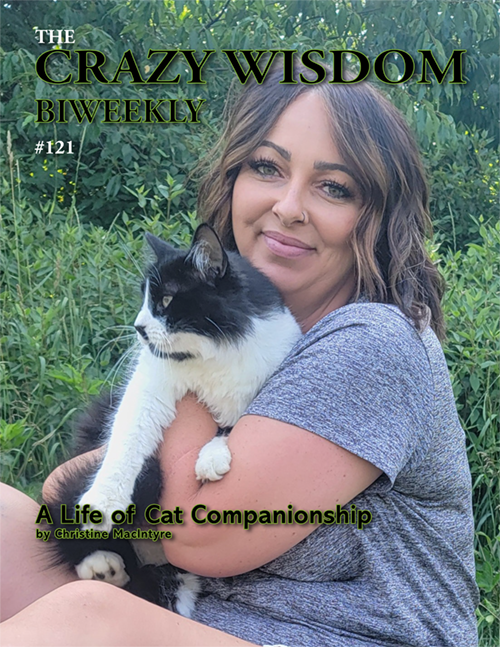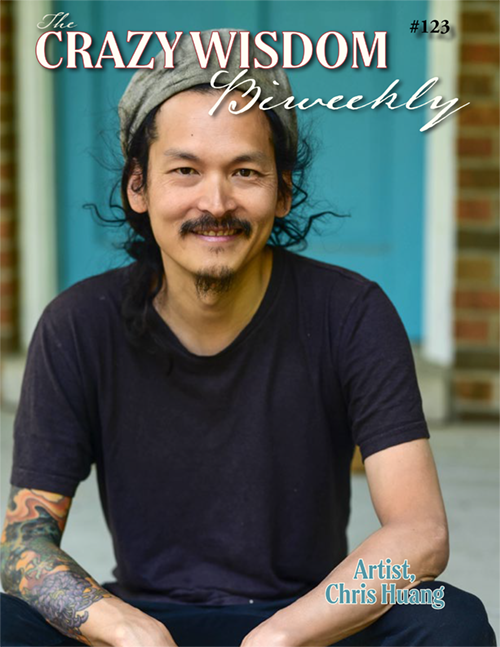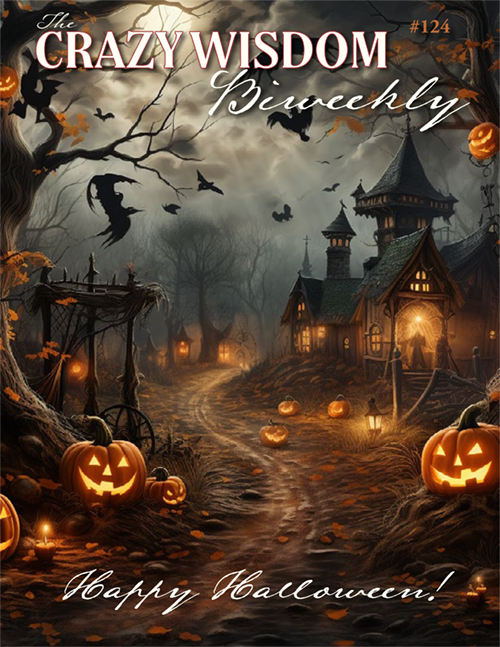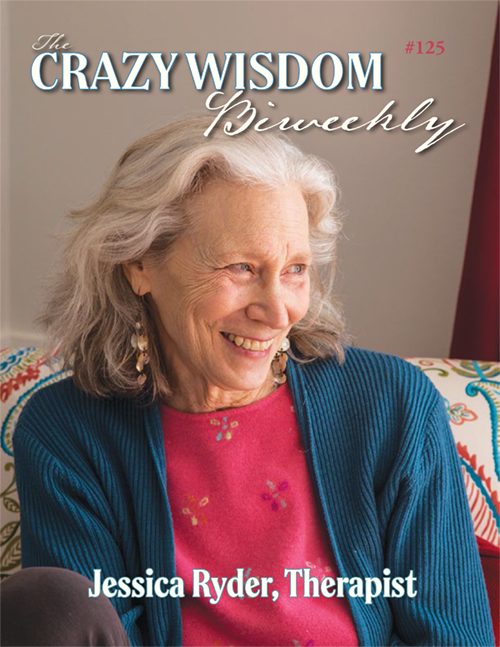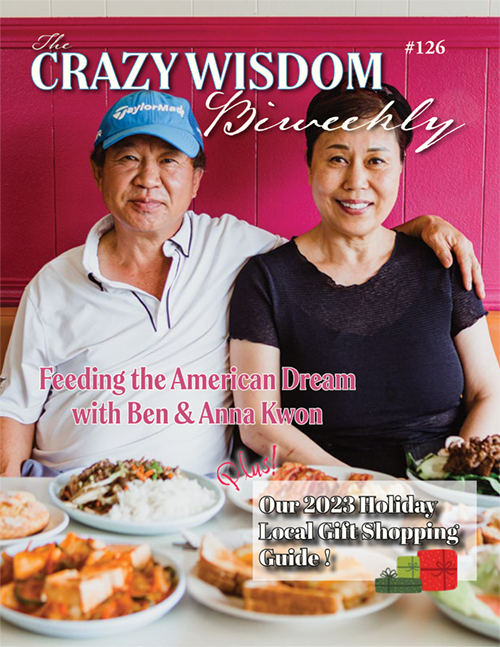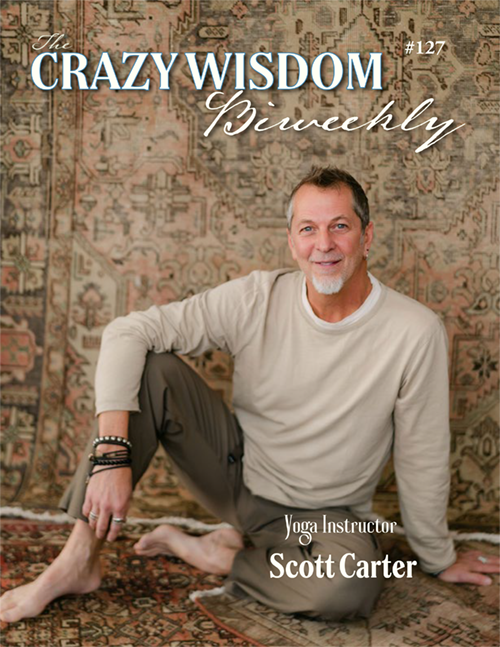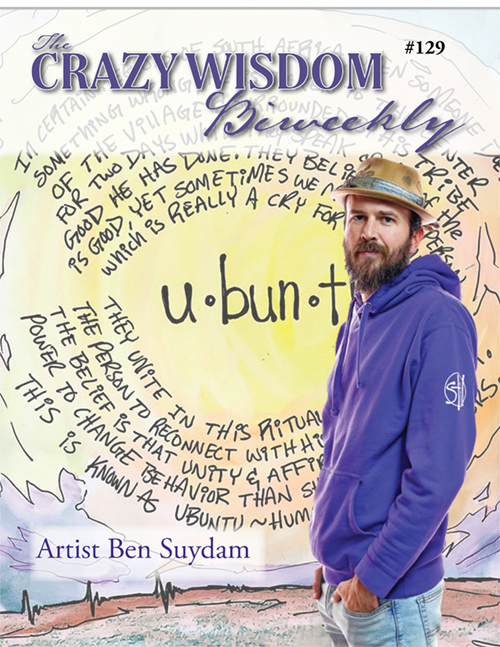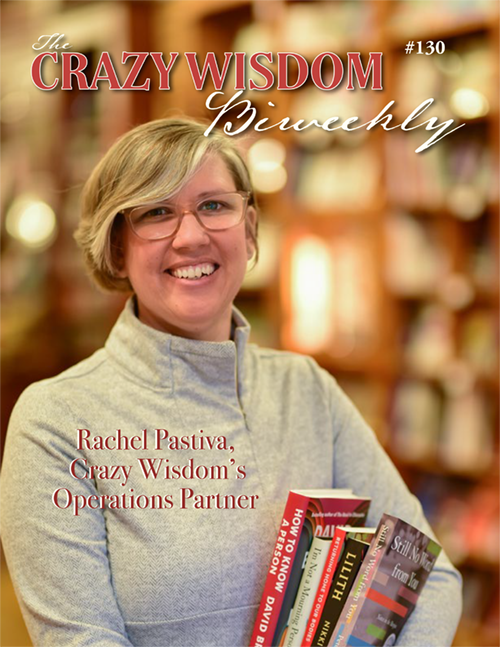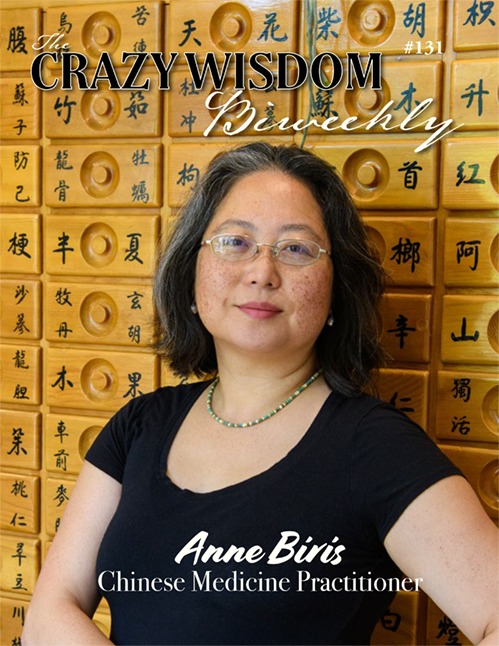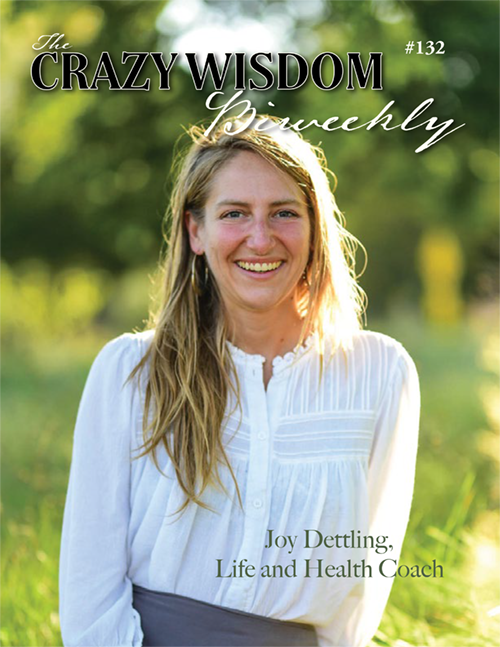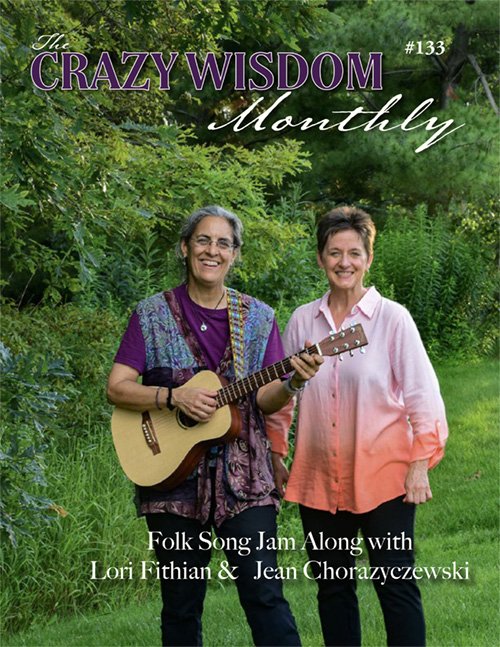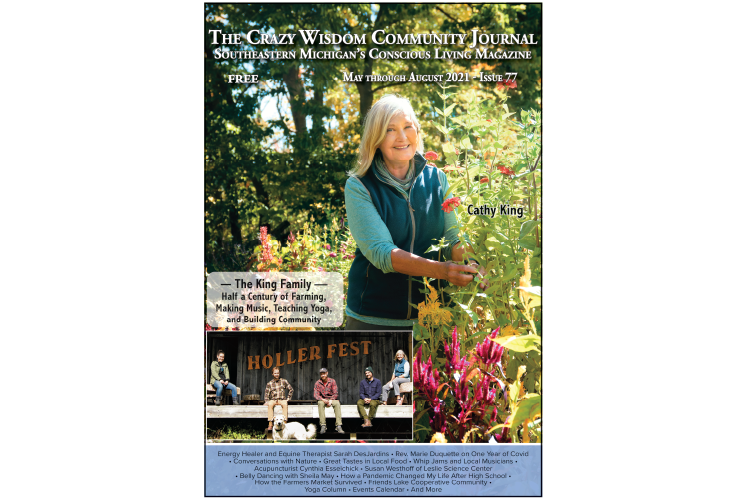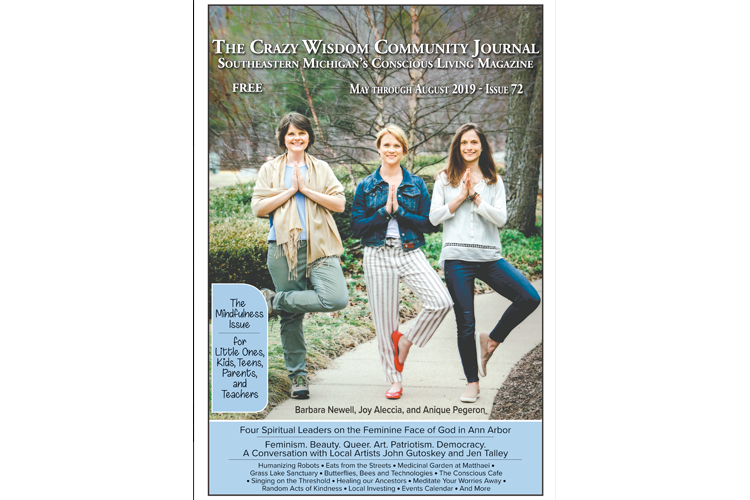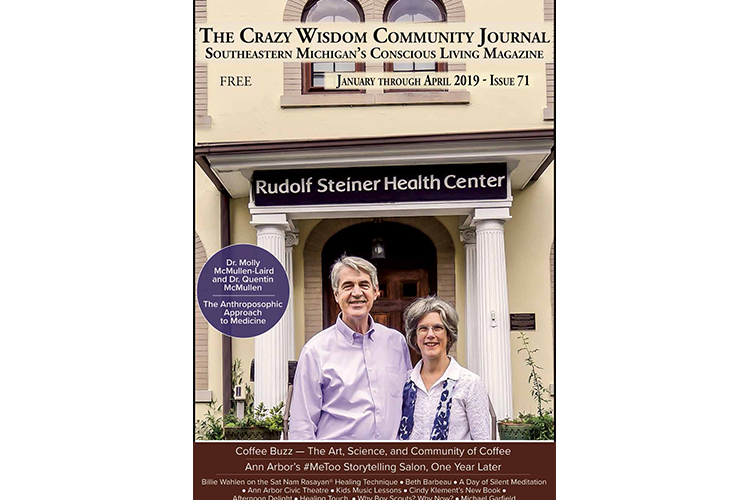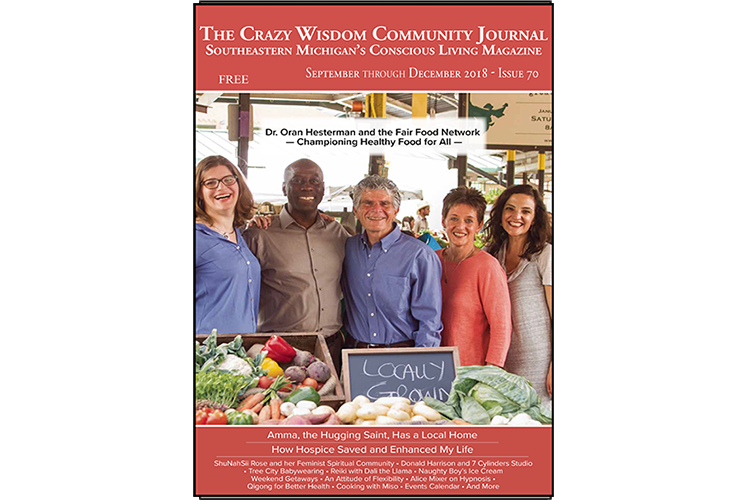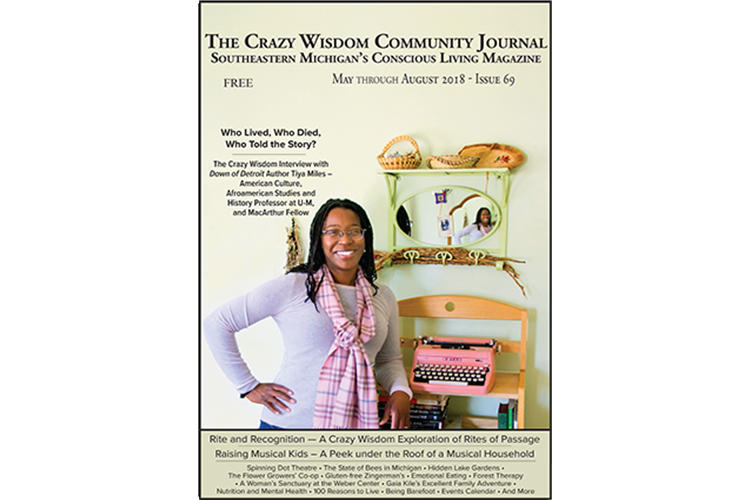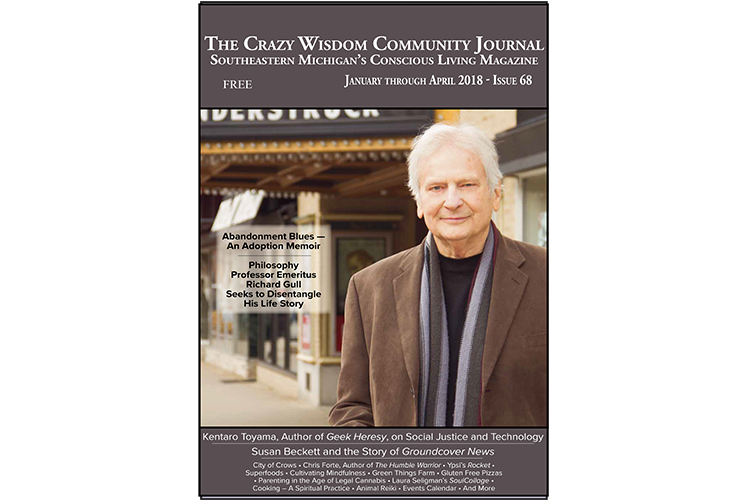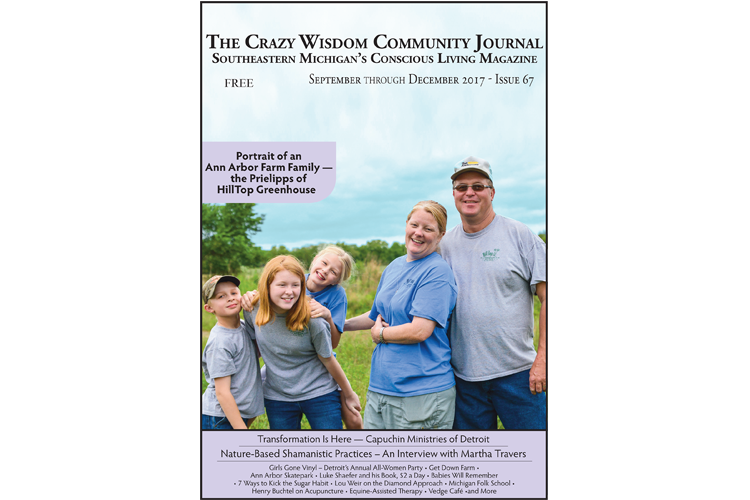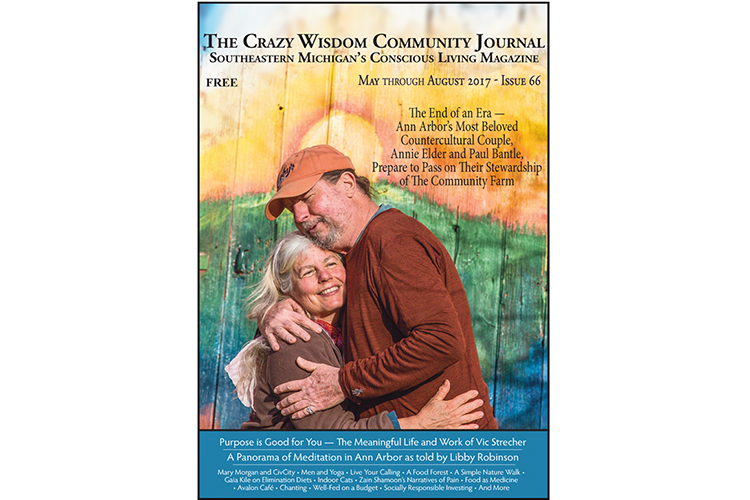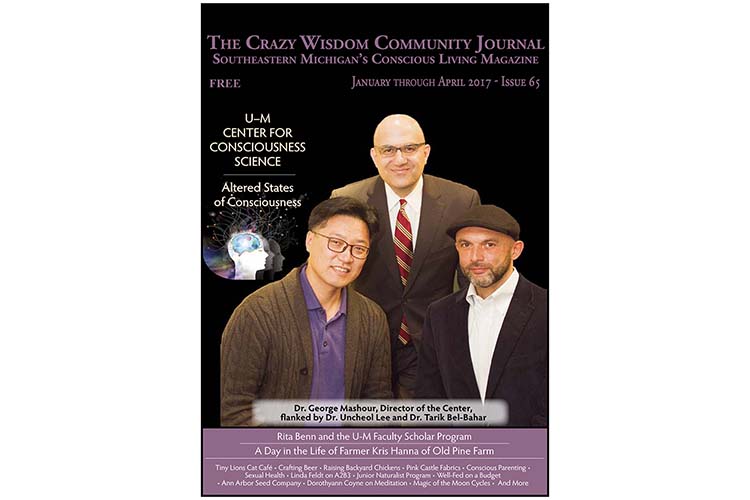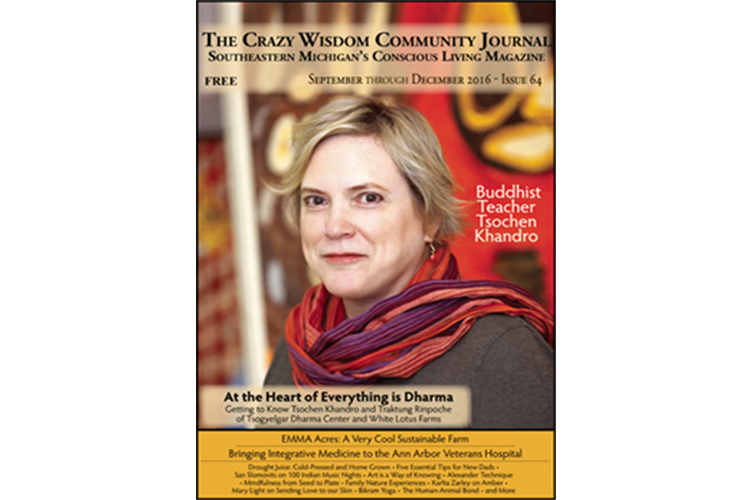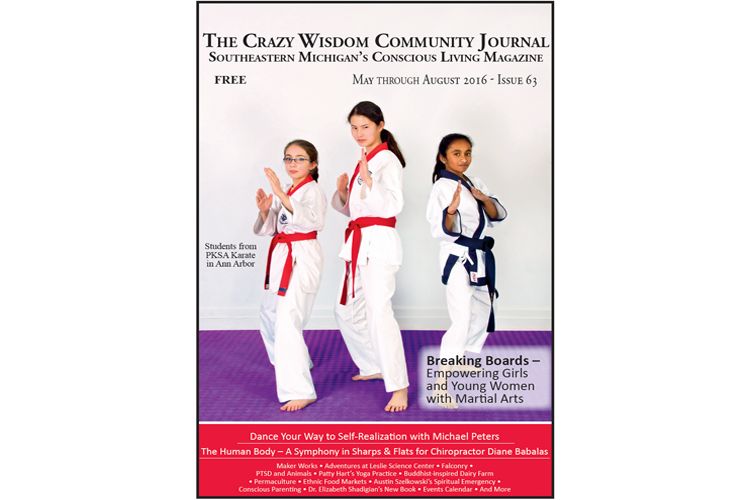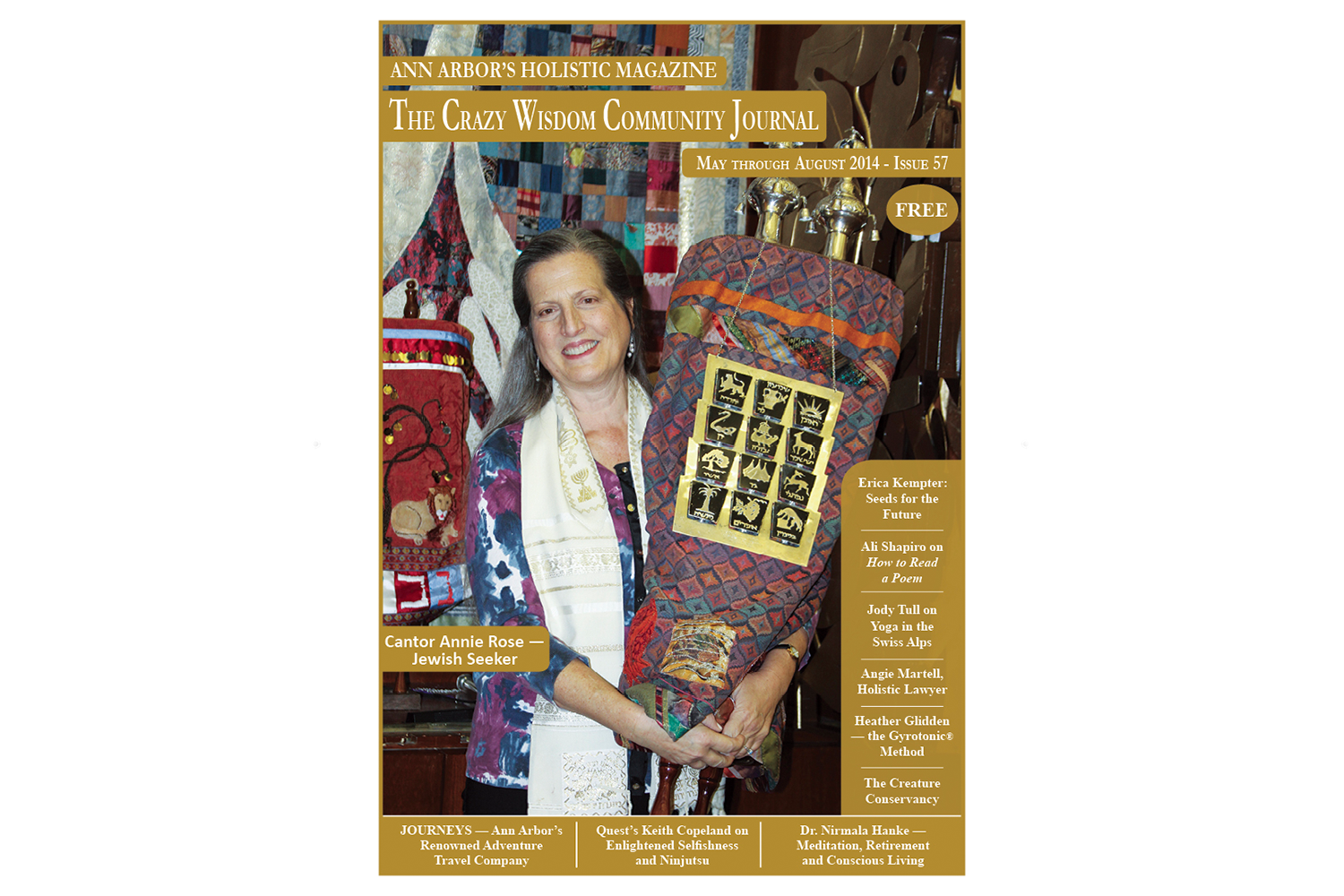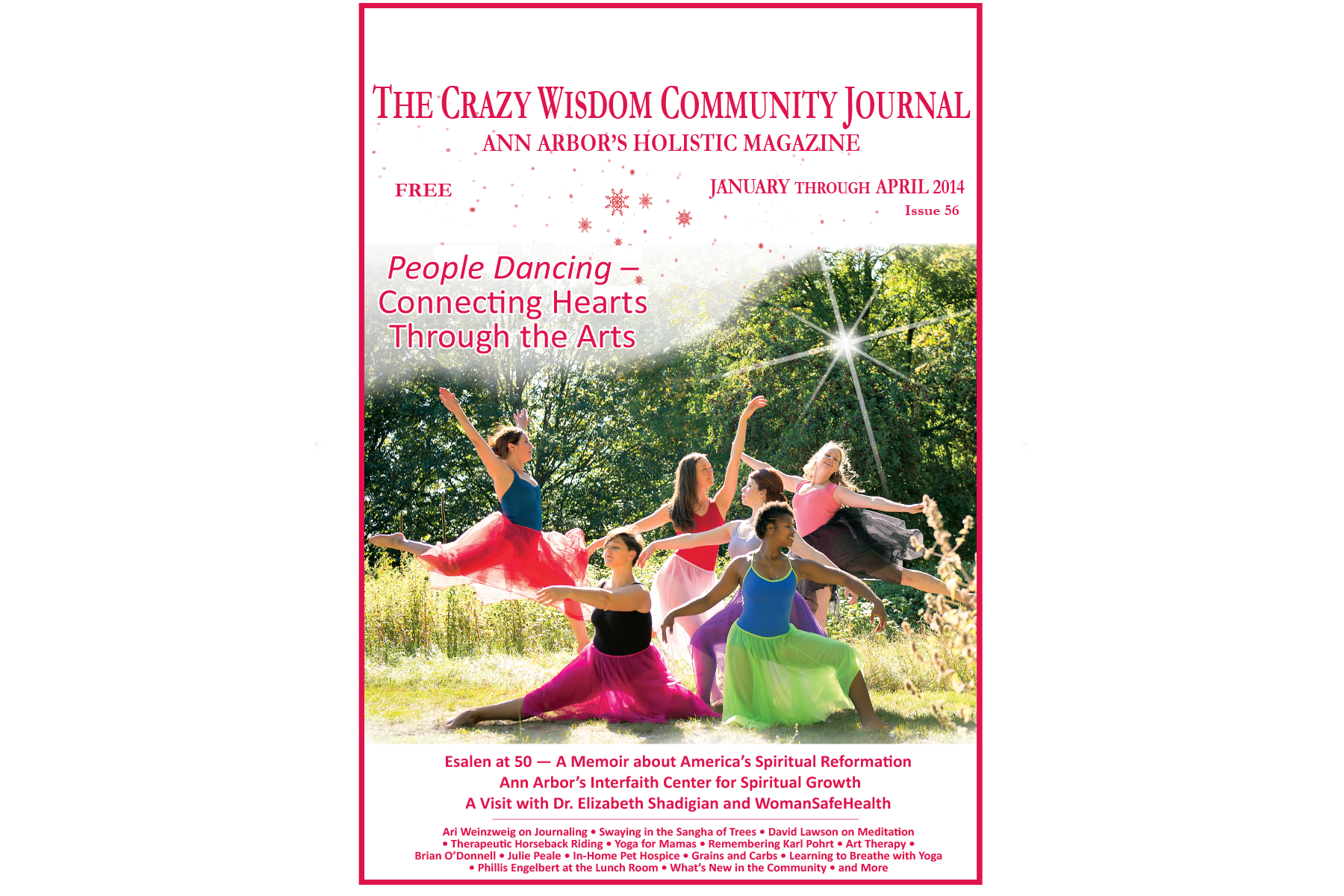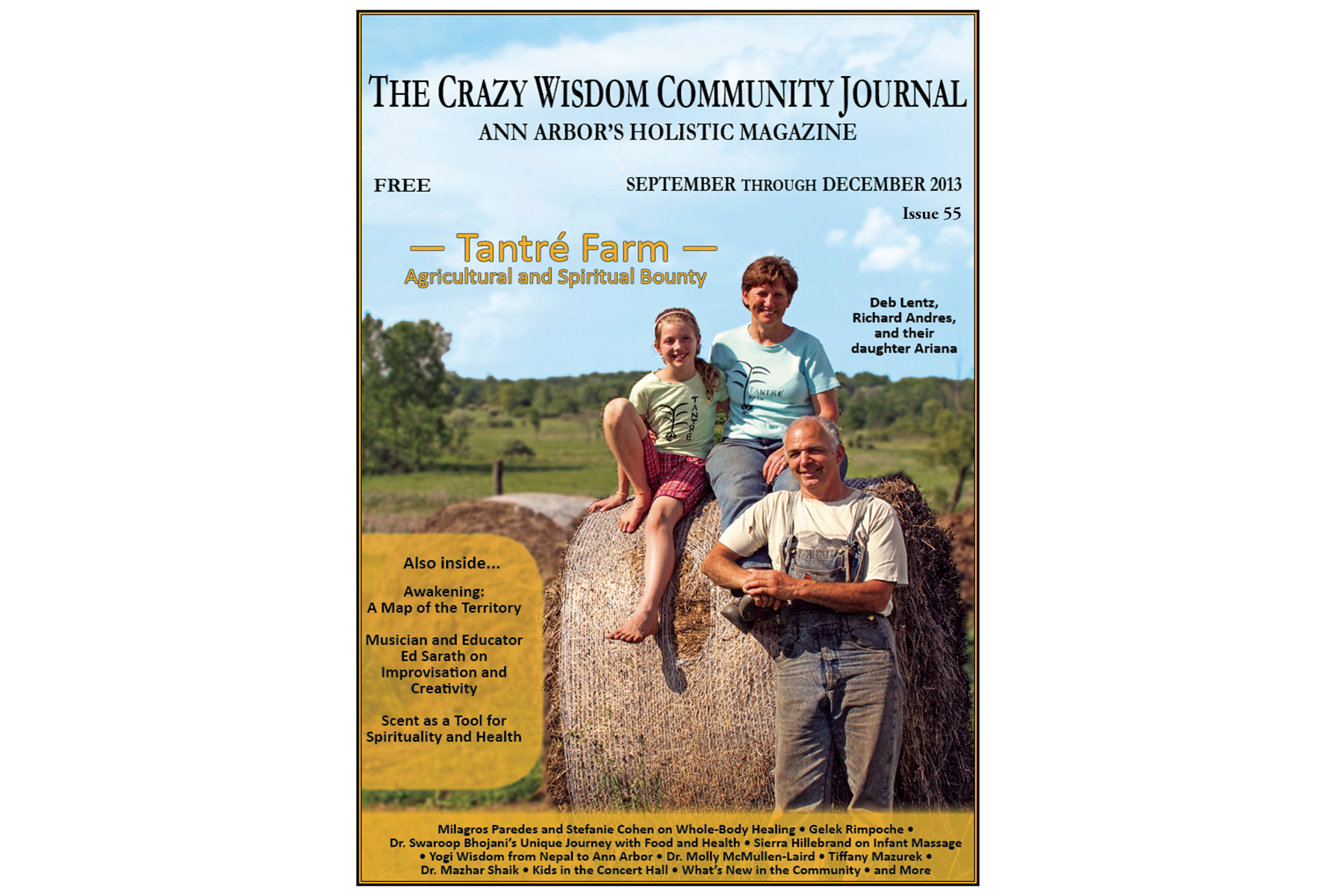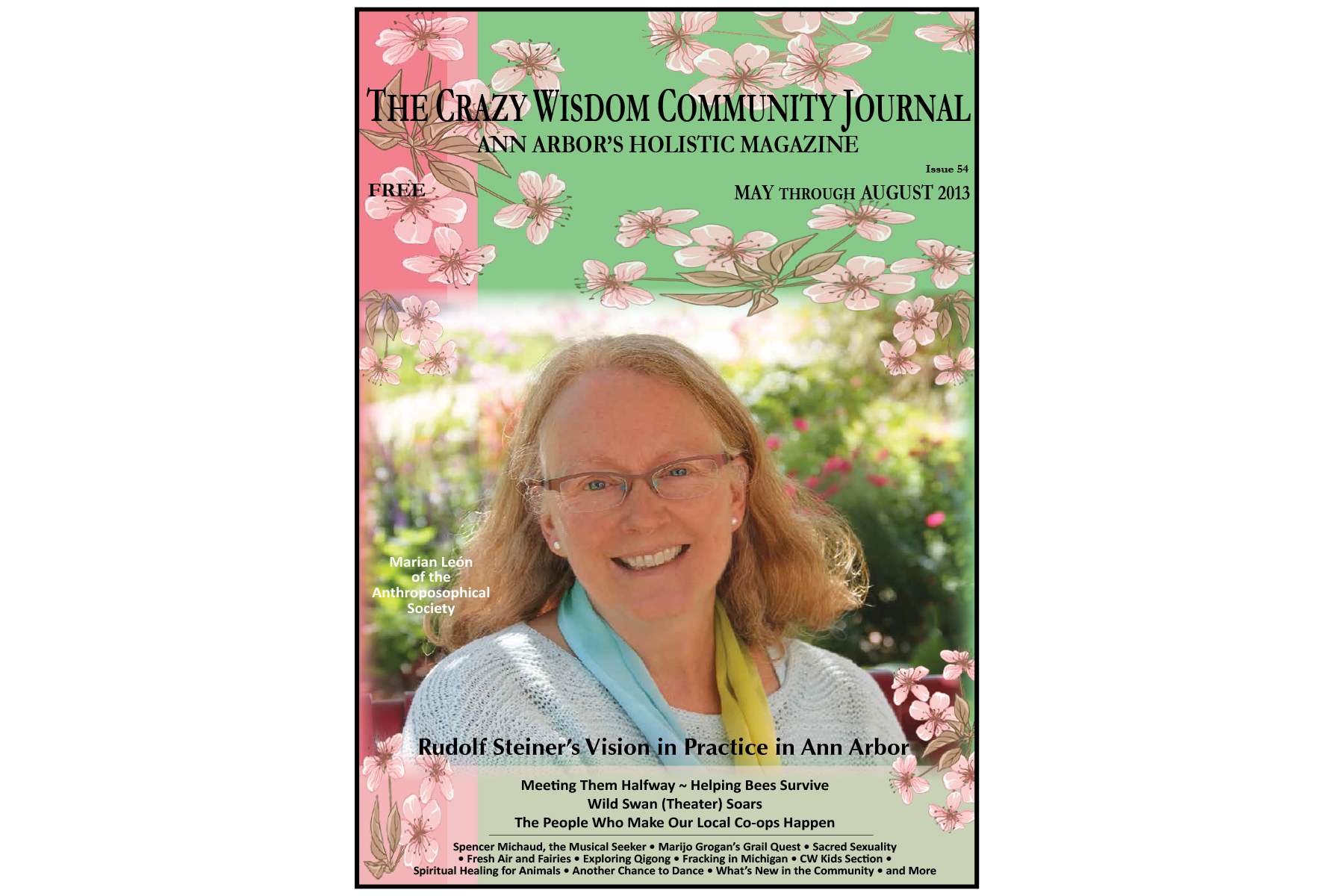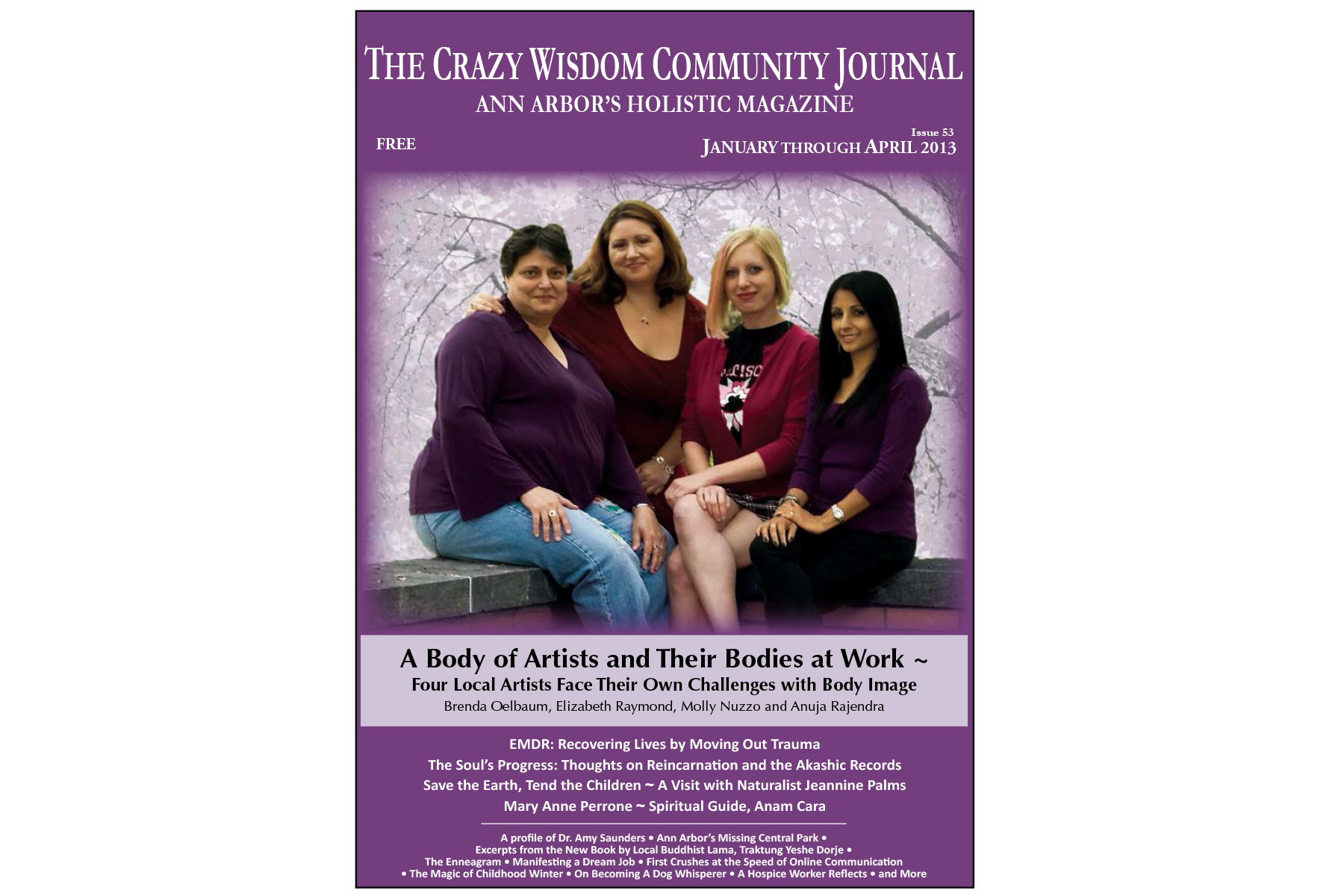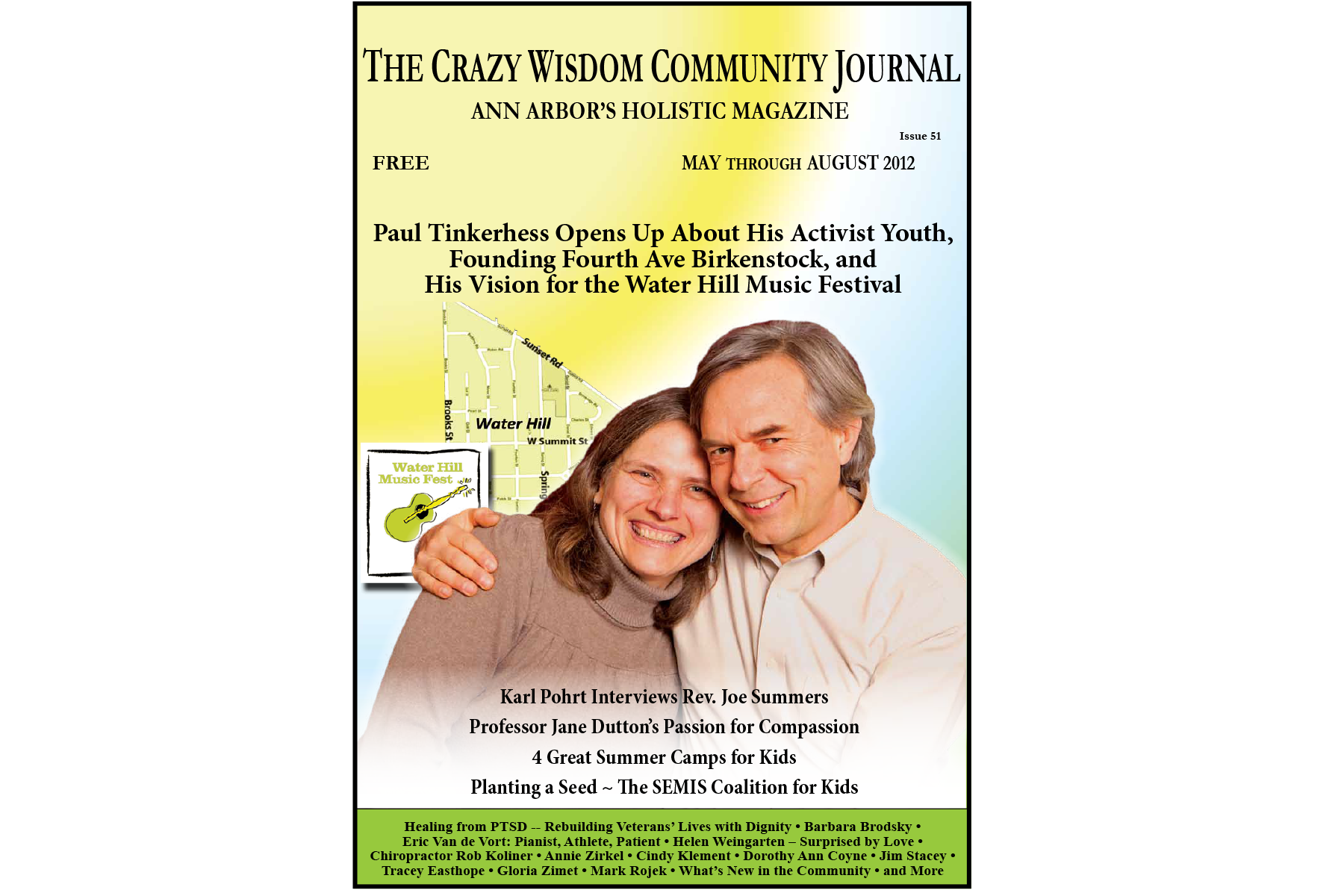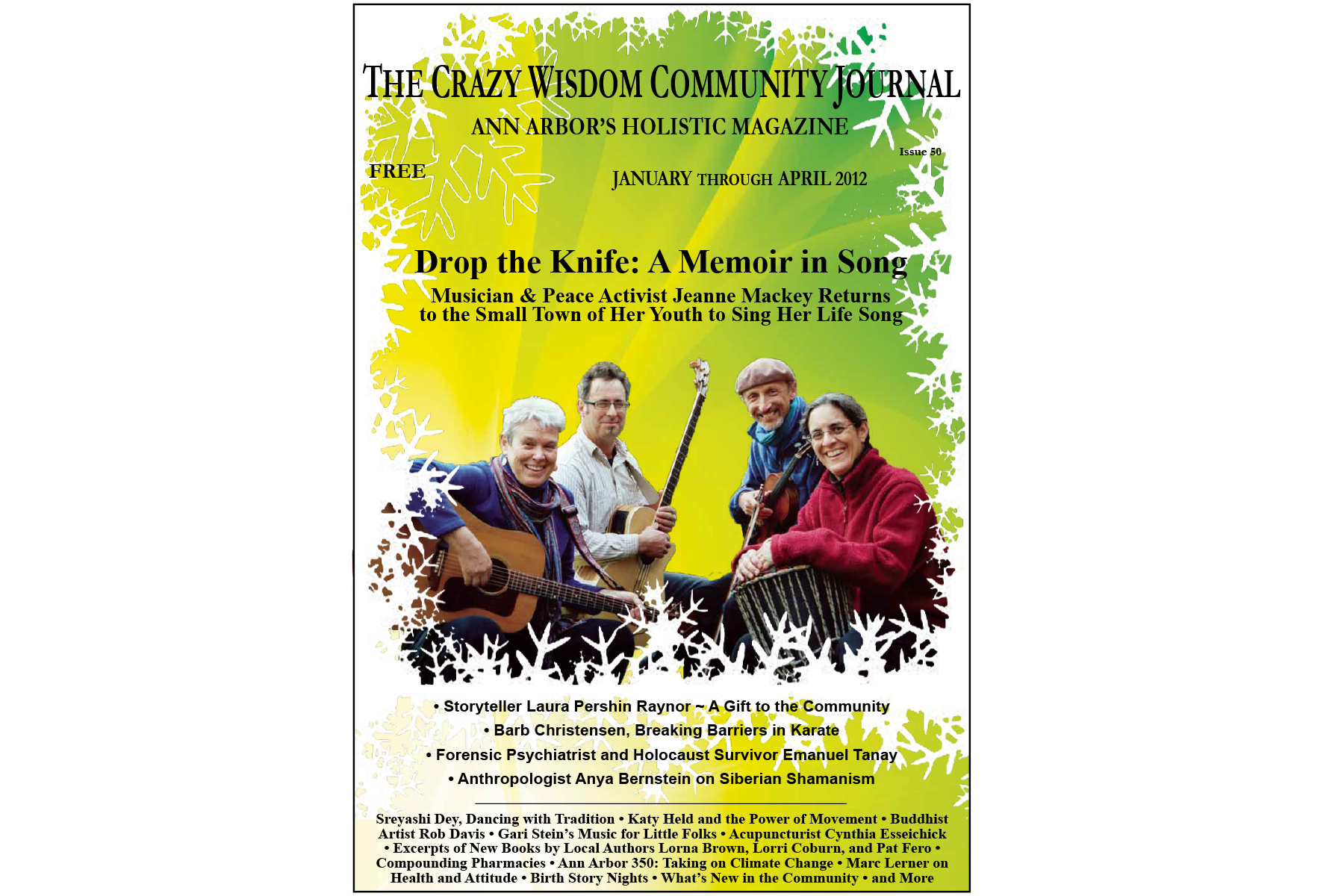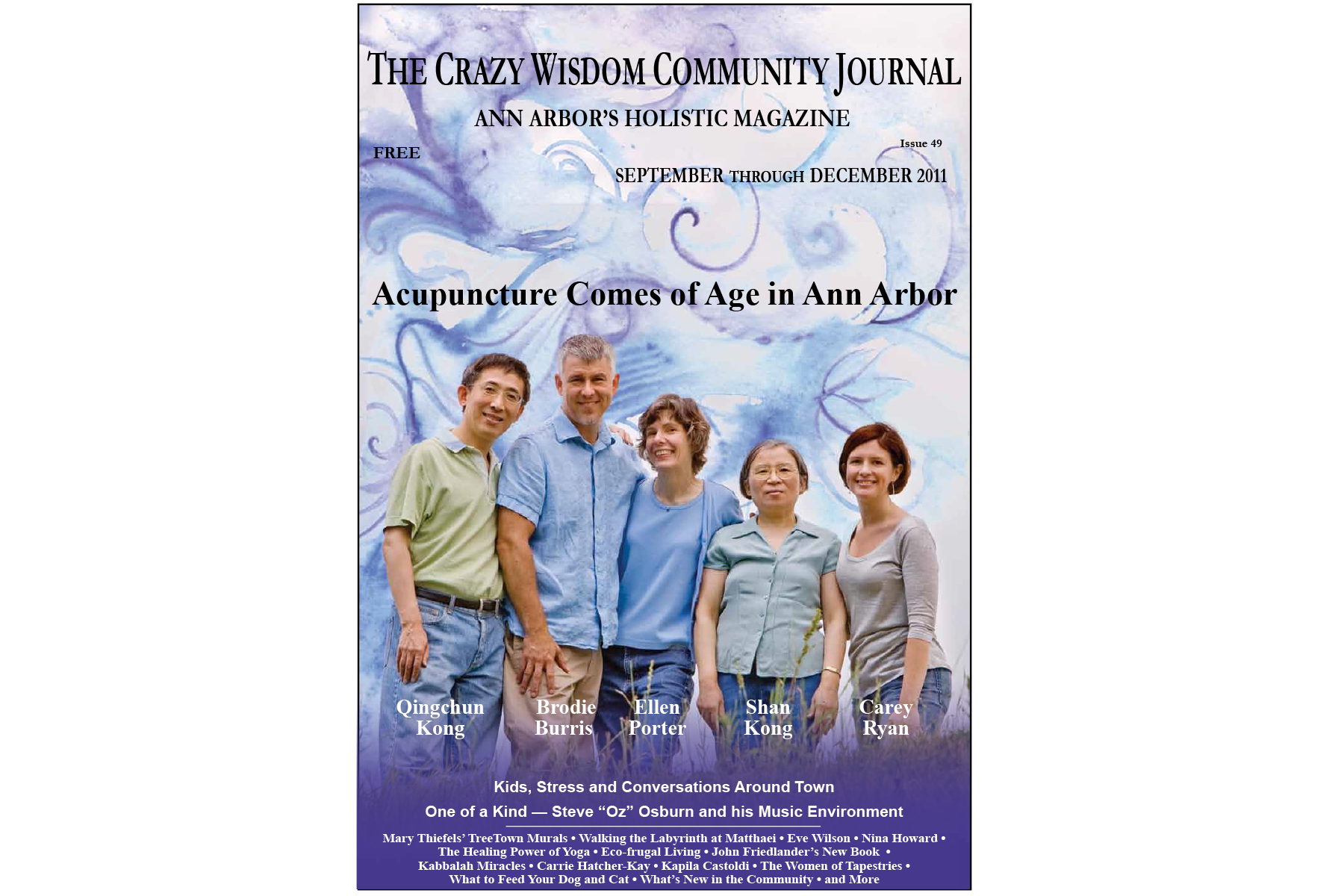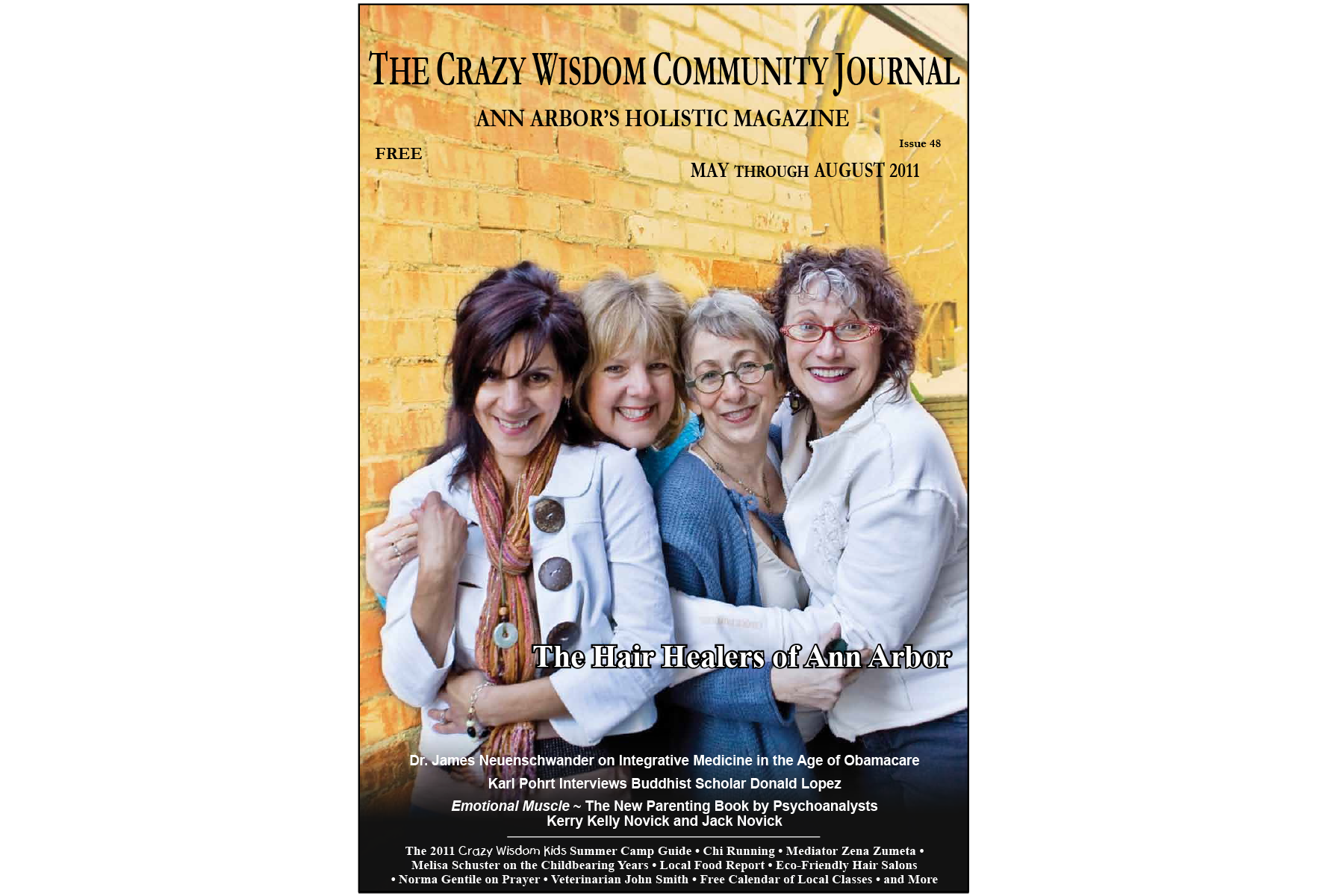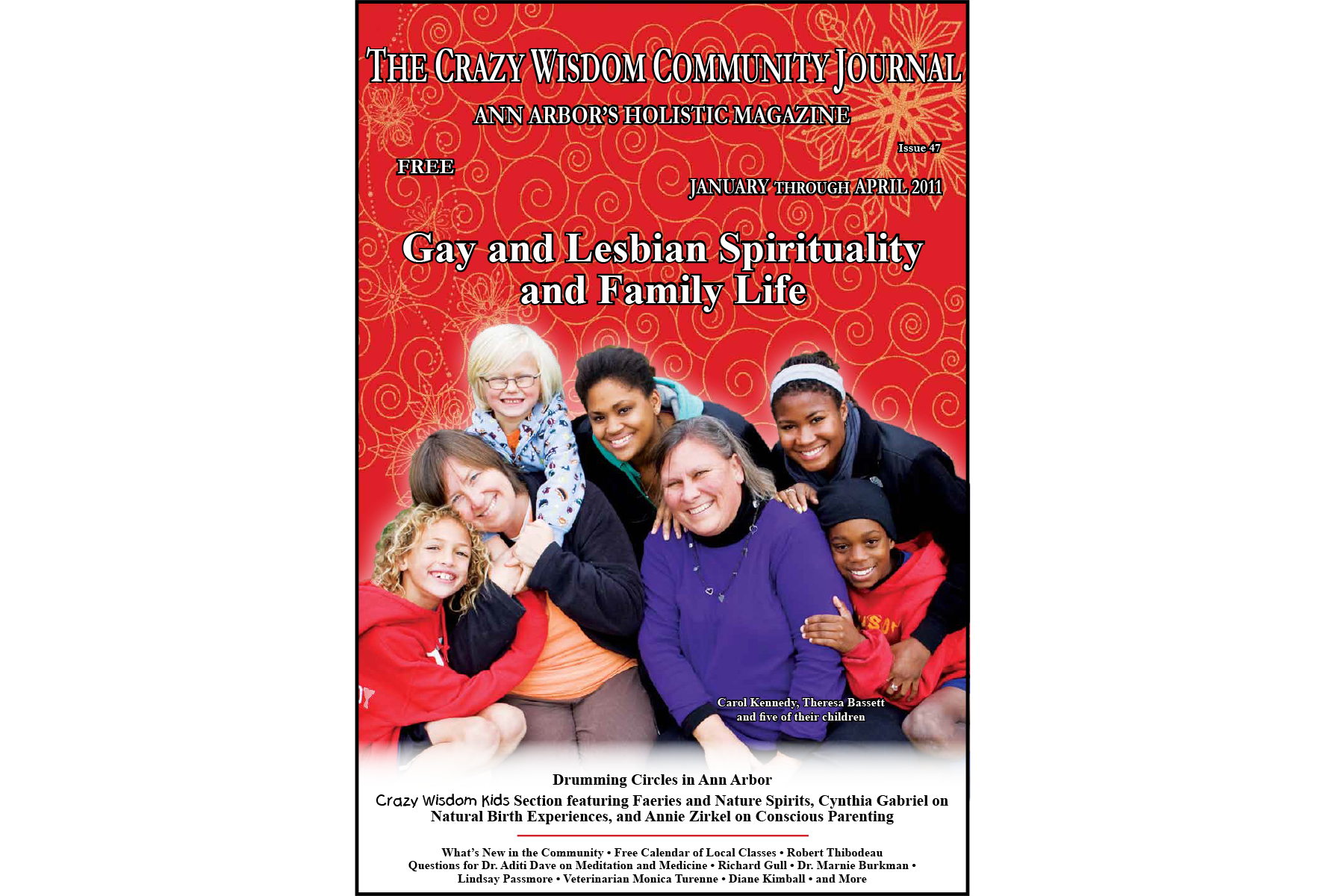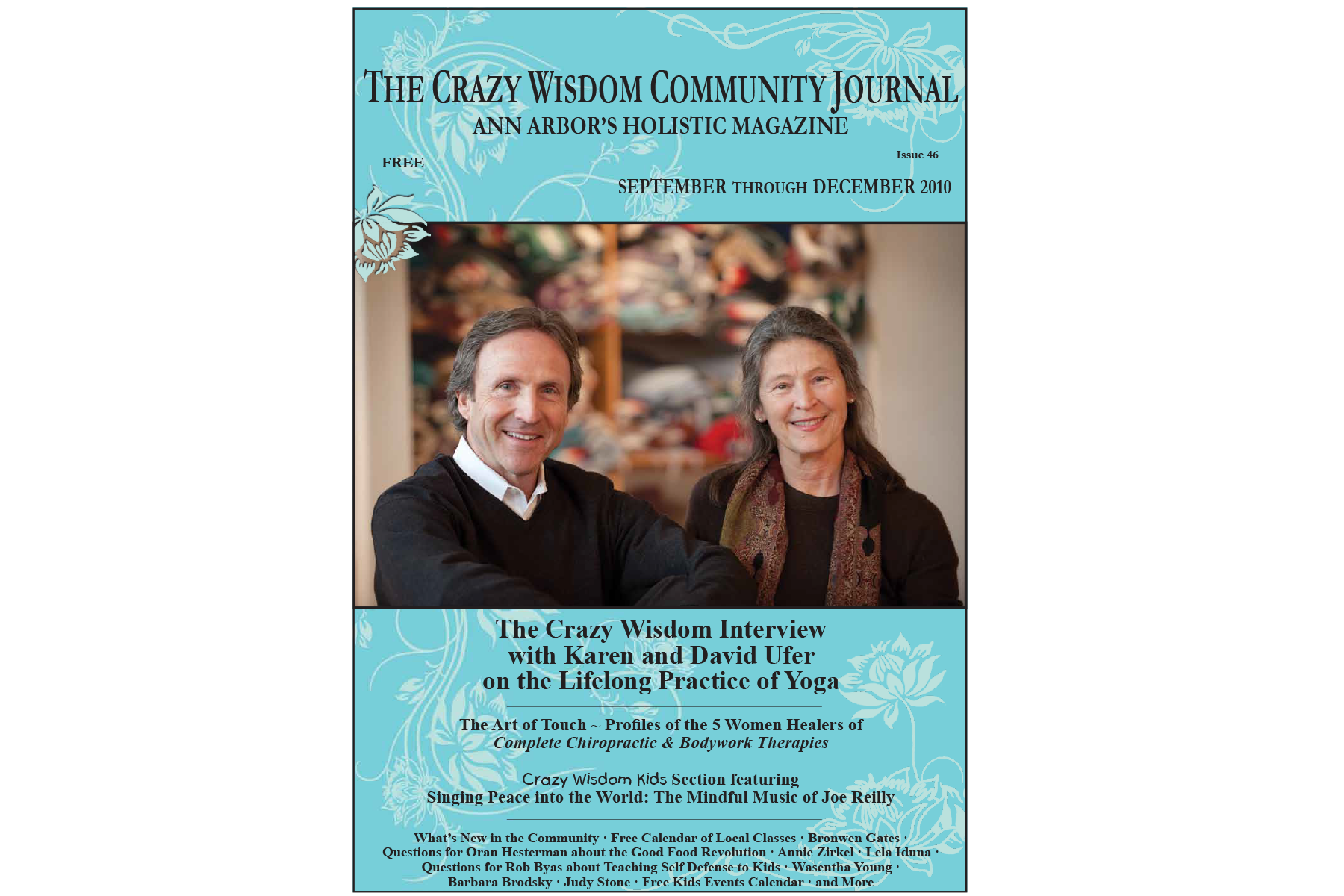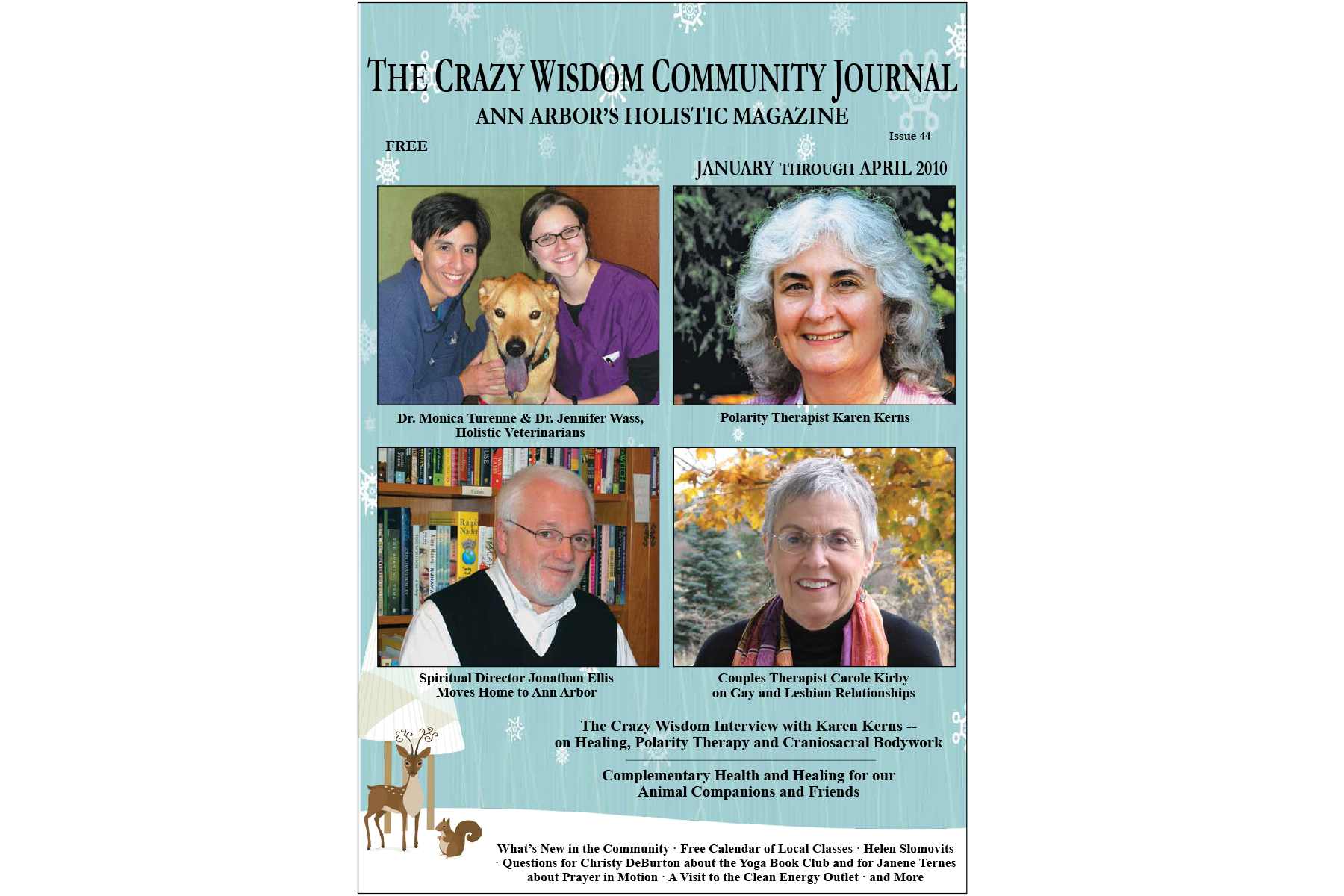I first met Stefanie Stauffer, Manager for the Ann Arbor Farmers Market, while picking up food at Argus Farm Stop. I had seen her at local food events, but this was our first “hello.” I asked her if she was interested in talking about the virus and how the market has handled the challenges. Luckily, she agreed. We later had a Zoom meeting and began carving out slices of topics the public seemed curious to know. Both of us have similar backgrounds. We run small farms as well as have a vested interest in serving all people in our area with healthy, reasonably-priced food grown and produced in our own communities.
Crysta Goes Visiting, Spring 2021
By Crysta Coburn
Erin Berger and the Bookend Candle Co.
“I have always loved reading, collecting books, and visiting libraries. There’s nothing like immersing yourself in a good book,” said Erin Berger, the woman behind Ypsilanti-based Bookend Candle Co. You and me both, friend!
Originally from Garden City, Berger attended grad school at Eastern Michigan University, where she “grew to love Ypsilanti, especially the (surprisingly affordable) old houses.” The year following completing her master’s degree in historic preservation, she bought her home in the Historic District. As for starting her own home-based candle business, she said, “I remember attending DIYpsi in the summer of 2017 and thinking about how amazing the artists were and what in the world could I create to take part in the event. Later that year, I decided to start what would become Bookend Candle Co.”
Berger is a self-taught candlemaker. “I learned through trial and error and many nights spent in deep dives on candle-making forums,” she said. “But the best part is that for every candle that doesn’t make the cut, I still get to burn it myself.” Deciding on a name was difficult, she said, “until [she] looked around at [her] collection of candles interspersed throughout the shelves and stacks of books” of her home. “Most were functioning as impromptu bookends. And that was it; Bookend Candle Co. had a name.”
Her candles are 100% soy made without dyes or phthalates. “I do my best to offer the highest quality product in terms of performance, safety, and sustainability,” Berger explained. “I have asthma myself and don’t want to be breathing in harmful chemicals. I would never sell a product that is not up to my own standards, so I use as natural components as possible and buy from vendors I trust. Our tagline is ‘realistically scented and ethically made,’ and I take that to heart.”
Some of the scents in the Signature Collection are Breathe Easy (scent notes: camphor, eucalyptus, and mint), Rare Book Room (scent notes: cedarwood, leather, and vanilla), and Mountainside Cabin (scent notes: balsam, cedar, and wood-burning fireplace). There is also a Spring and Summer Collection with names like Spring Meadow, Kitchen Garden, and Seaside Cottage. If you are in a situation where you can’t burn candles, there are also wax melts and reed diffusers.
All of these names evoke in me a sense of comfort and relaxation. Berger shared that one thing that inspires her business is “being able to provide people with a sense of comfort and happiness through scent.” She went on to say, “My goal is to transport you to a different place or time. Hearing one of my candles reminds someone of time spent as a child with a grandparent no longer with them makes it all worth it.”
For more information and a list of shops that carry Bookend Candle Co. products, visit www.bookendcandleco.com. Bergen can be contacted at erin@bookendcandleco.com or via Instagram @bookendcandleco.
Lyanna Bennett and Mystic Creations
Lyanna Bennett has moved around a lot in her life, but she is putting down roots in Ann Arbor. She told me, “I fell in love with Ann Arbor after spending a lot of time here in my early 20s and finally decided to settle in one place.” And her specialties certainly fit right in with our community.
“I first discovered mysticism when I was 12 years old,” she shared with me. “I was fascinated by the supernatural nature of it. Spells and potions and magickal beings were what drew me in, but it brought me to the concept of natural healing, herbalism, and spiritual guidance, which is what led me toward the path I am on today … offering services to the community reading tarot, runes, and tea leaves, as well as offering advice on alternative healing methods.” Bennett is mostly self-taught, but, she said, “I did go to college to learn more about plants and the human body in order to know more about how natural medicine works.”
The drive to help people is what inspires her. “I have always been drawn to serve others,” she said. “I was a home health aid for many years, I have always worked in some sort of customer service industry, and I even thought about going into the military to be a medic.” Bennett is also motivated to make her spiritual practices a central part of her life. “I do think we all find the path that we are meant to be on,” she said.
The name Mystical Creations came to Bennett one day after working for a metaphysical store in Lansing. In addition to offering private readings, Bennett plans to soon add “online courses ... covering everything from the basics of witchcraft to divination techniques, properties of herbalism, advanced magick, the philosophy of magick, and many more.”
Right now, you can find Bennet offering tarot cards and runic divination readings at Evenstar’s Chalice in Ypsilanti.
To make an appointment, visit facebook.com/lyannabennett.mystic or call (734) 680-2707. For in-person readings, visit Evenstar’s Chalice in Ypsilanti on Thursdays 2 p.m. to 6 p.m. or Saturdays 3 p.m. to 7 p.m. Appointments can also be scheduled by calling Evenstar’s Chalice at (734) 905-7980.
Drew Hill and The Drewbie’s Zoo
“I am all about fun,” said Ann Arbor native Drew Hill. “I try to find a little fun and whimsy in everything I do, and since starting Drewbie’s Zoo, my goal has been to share that with others.”
Hill attended Pioneer High School then studied Costume Design at the University of Michigan. “Since graduating college,” he said, “I’ve lived in Chicago and Los Angeles, but Ann Arbor keeps calling me back. It’s such an amazing city to live in, and it’s great to be close to my family.”
It was Hill’s grandmother who taught him how to knit when he was ten years old. “I became obsessed!” he said. “I knit on and off all the way through middle school and high school. When I was in my last year at Pioneer, I started a small club for knitting and yarn crafts, and it was at this time that I first picked up a crochet hook. I taught myself from a book and was amazed at the artistic freedom that crochet offers.”
When a good friend from high school and his wife were expecting their first child, Hill first tried his hand at amigurumi, the Japanese art of knitting or crocheting small stuffed animals and other anthropomorphic creatures, which make up the bulk of Drewbie’s Zoo.
Where did the name Drewbie’s Zoo come from? “It wasn’t until I opened an Etsy shop that I realized I would need some sort of business name, which was surprisingly difficult,” Hill said. “I wanted it to have something to do with animals and to be a little whimsical. I toyed around with a lot of different ideas, but I settled on Drewbie’s Zoo because it was the most fun to say out loud!”
Looking through Hill’s Instagram, there is no denying his talent or the cuteness of his clever creations. Said Hill, “Sometimes you just need something cute or punny or beautiful to make you smile, and providing that for others definitely makes me smile!” Some of my personal favorites are the adorable little dragons, smiling tea cups and coffee mugs, the cast of the Lion King, and Luna from Sailor Moon (I grew up in the 90s). But, they all make me smile! And how inspiring for a young person to have a plush Ruth Bader Ginsburg or Rosie the Riveter?
If you have an idea in mind, but don’t see it in the shop, worry not because Hill takes special orders. He explained, “One of the best parts about running a small business is that I can provide something completely unique, whether it’s your favorite animal, character, or even a replica of your pet!”
For more information, visit drewbieszoo.etsy.com or instagram.com/drewbieszoo. Hill can be contacted through Etsy or at drewbieszoo@gmail.com.
Related Articles:
Necessity Grows Innovative Farming In Our Own Backyard
What were once three businesses, Ann Arbor Seed Company, Green Things Farm, and the Land Loom, is now one: Green Things Farm Collective. They came together in 2020, as their website explains, “to expand production, share the management of running a diverse farm business, and develop a model of sustainable, cooperative, and responsible farming.”
Leaps of Faith: This That, and the ODDer Things
Claire Broderick waited with the world, trying to grasp the fallout of the Covid-19 pandemic. Even though she wanted so badly for 2020 to be the year she would manifest her dream of opening a retail shop filled with her collection of what she calls “uniquities,” there was reason to pause. In the meantime, she kept dreaming, researching, and collecting. Adding a taxidermy octopus here, reaching out to a bone jeweler there. She knew how important it was to persist and keep planning.
The Transformative Power of Raqs Sharqi – Belly Dancing with Sheila May
Raqs Sharqi, or in Westernized terms, “belly dance,” is a classical style of Egyptian dance utilizing complex movements of the torso, arms, and hips. It is widely known as a playful and sensual dance that celebrates the feminine form. Belly dance movements have been inspired by a long history of dances ranging from within Egypt to other cultures across Eurasia.
Live Love--Share the Hearts
By Michael Oliver
As I embarked on my journey into 2020, I found my fellow human beings becoming increasingly angry, fearful, and distrustful of each other. I asked myself this question, “Is this who we really are?” It felt like the negative and dark energy hiding in the shadows finally found a doorway. So many triggers appeared, and they would consistently attempt to flip the switches of light, to darkness. At times it felt terribly dark and other times, it felt like light was returning. It is a battle that continues today, but is not a new battle; it is a different battle.
What is different about this battle, you may ask? Awareness! Yes, we are more aware of what was lurking in the darkness than we were in the past. Humans are waking up! And it is in that process of waking up that we are learning to acknowledge the ways of the past that have been damaging to our species and limiting our growth toward living a life of love and joy. For me, 2020 triggered a deep and self-reflective time. I kept pondering over what I could do to make life for humanity better, and I came up with the Share the Hearts Campaign.
The Share the Hearts Campaign was inspired by Dr. Kenneth McCulley who founded a human potential development program which included a poem titled I Live Love Every Moment of My Life. In that poem, Dr. McCulley’s primary message was to wake people up to the reality that we all come from the same source and as such, we are all brothers and sisters, one and the same. It was Dr. McCulley’s dream that all humans demonstrate, unconditionally, Living Love—performing acts of kindness for their fellow human beings. Motivated by the energy and effort of Dr. McCulley, our team wanted to build a campaign that would operationalize that message to the world.
Sharing a simple wooden heart can make a difference! Every act of kindness, thoughtfulness, caring, and copassion, is an act of living a life of love—as the Beatles once sang, “All We Need is Love.” True! What a difference love can make.
Mindtation, a small start-up company, is on a mission to help people find their paths of joy, because when people are living their joy, they live a life that is aligned with who they truly are, living in and experiencing positive synchronicities. We decided that we wanted to do something fun, yet meaningful, to engage people back into love consciousness and help them along with aligning with their true selves.
Read related article: Living From the Awakened Heart
Along with teaching the power of meditation, the breath, mindfulness, intuition and sound, we are initiating the Share the Hearts campaign to help spread loving kindness. Wondering how it works? Small packets of wooden hearts are purchased from our website and then you can give them to people you “catch” doing acts of loving kindness. In the packet, there is a heart and a card explaining the purpose of this event. Each one of us will be the eyes of the change we want to see. This act, this awareness, plants the seed of love and kindness into one’s consciousness—making it grow each time it is acknowledged within someone else. Each time a wooden heart is given for an act of kindness, it reinforces love and kindness within yourself (the giver) as well as expanding the consciousness of love in others (the receivers).
At the deepest level, we are all one and the same. As Peter Yarrow said, “There is only one river. There is only one sea. And it flows through you, and it flows through me. There is only one people. We are one and the same.” The kick-off for Mindtation’s Sharing the Hearts Campaign took place on April 9th, 2021. To kick-off the event, Mindtation presented a video providing an overview of what it means to live in joy and love—especially during stressful times and the many benefits that it can bring. The purpose of this campaign is to bring us back to loving kindness and mindfulness...bring us back to awareness of our own humanity.
Let’s re-learn how to respond to all situations with love. The goal is to put the intention of Living Love, our Truth, back into the world.
If you are interested in this campaign and would like to learn more, please visit Sharethehearts.com. A percentage of all heart package purchases will be donated to select charities.
Related content:
Golden Fleece: Keeping You Warm and the Planet Cool with Michigan Merinos at Happy Goat Lucky Ewe Farm
“Watch out for the ram.” Surrounded by sheep, I turn quickly, trying to find the one ram among the twenty plus ewes in the pen. They all look alike in their thick winter fleeces on this January visit, dashing away from me when I approach like minnows in a pond. I move closer to Bridget Kavanaugh, the owner of Happy Goat Lucky Ewe farm, to make sure there isn’t enough open space for the ram to follow through on his name. Sheep bump against my thighs, and I feel like I’m being hit by toddlers with pillows, their fleeces are so thick. It’s a barnyard comedy show: I’m darting after the sheep to see how long their fleeces are, they are running away from me while chasing the hay that Kavanaugh is tossing to them for their late morning feed. Finally, I spot the ram, fortunately across the pen from me, horns hidden by fleece, leaving the black straps of his chest harness the sole identifier.
Growing Older In America: The New Culture Wave
When I was a kid, my grandparents appeared to be permanently ancient in my eyes. Grandma smelled like cookies and mince pies. Grandpa (retired from working on the line at Chrysler at age 65) smelled of gardens and woodworking. The oldest person on TV in 1963 was Granny on The Beverly Hillbillies. She was portrayed as a cross between a beloved spry old chicken and your slightly demented next-door neighbor for whom you shovel the sidewalk each winter. Although this show presented a few progressive plot lines about class conflict, you still could not have made an episode about seniors and bathrooms 30 years ago for TV. Only when us baby boomers began to ride the cultural wave of aging in America did perceptions of what it meant to be an elder start to change.
Great Tastes in Local Food, Winter 2021
Great Tastes in Local Foods. Support our local restaurants.
A Page from the Crazy Wisdom Journal — A Look at Our First 25 Years
By Kirsten Mowrey and CWJ Editorial Staff
(Editor’s Note: Kirsten Mowrey has been a steady journalistic presence on the Crazy Wisdom Journal staff for close to ten years. She has contributed numerous feature stories and interviews for us, including cover stories on Tiya Miles, professor of American Culture, Afroamerican Studies, and History at U-M, and Functional Nutritionist Coco Newton).
Think back in time to twenty-five years ago. The year was 1995. You may have had kids, just out of school and starting your first career, or maybe you weren’t even born yet. People communicated by calling each other on landlines, though cell phones were beginning to appear. Magazines came with discs offering you a new service: America Online. When you turned on your computer (if you even owned one!), you watched it warm up, startup icon blinking for ten minutes before it was able to slowly process your requests.
However, this article isn’t a nostalgic trip about the good old days. I’m setting the scene, reminding us of how things used to be before technology made our lives so fast and full. Before we could access information as fast as we could think of it. It's a reminder of the world that existed when the Crazy Wisdom Community Journal was born and introducing you to some of the reasons why it was ushered into this world.
The local community connected in those early days via word of mouth, bulletin board, or flyer. Finding a holistic practitioner was a time-consuming business of searching, questioning like-minded friends, and visiting events to learn more about nutrition, bodywork, energy healing, midwifery, or anything that constituted the mystery traditions: astrology, herbalism, tarot, Kabbalah, numerology, Neopaganism, and Gnosticism, to name a few. These often denigrated disciplines had spent centuries living on the edges of western culture—never part of the mainstream, yet never fading. The counterculture of the 1960s, its interest in leftist politics and consciousness, brought awareness to these practices, along with the religions and practices of Asia: Buddhism, Hinduism, yoga, Feng shui, Zen, and meditation. All of these interests found a home at Crazy Wisdom Bookstore, founded in 1982. The store bridged, as U-M Philosophy Professor Emeritus Richard Gull said, “the connection between the New Left and the New Age.”
Deep Spring Founder Barbara Brodsky recalled, “When I moved to Ann Arbor in 1968, and sought people with whom to meditate, there was nothing! I was delighted to see Crazy Wisdom open its doors in 1982 and meet a few people with similar interests while browsing for books. So many of us longed for connection and dialogue. Later in the 1980s, I began to open my home to people interested in meditation instruction and to talk with Aaron (a channeled entity). It was hard to reach people in those days. Word of mouth worked best, and flyers left in the bookstore. So many of us desperately longed for a forum, a way to exchange ideas, offerings, and to get to know each other.”
Lori Fithian
drummer and community builder
How is it possible that 25 years have gone by so fast!? It really does seem like yesterday, when I first approached Bill about offering an open drum circle in the store. It has actually been so long ago, that I can’t remember when we first started doing it—I will have to go back to the archives of the CW Journal to find out. I am glad to know that they have a hard-bound archive in the store—such a rich history of activity in our special community!
I want to say a huge public thank you to Bill and Ruth for their support, in my own path of drumming—in the store and out in the community—but mostly for offering such an important resource to Ann Arbor. The journal is like an encyclopedia of information—so many treasures to discover—nutrition, wellness, spirituality, music, people, places, events and more. And I always enjoy the interviews—I love reading the stories of how people get to where they are now. The Journal has certainly helped me maintain my ‘business’ presence in the community, listing my events and monthly drum circle dates at the store, and sometimes a feature photo—which is always a bit embarrassing! If I ever need to find a practitioner of any sort, I head to my latest copy of the Journal first, even before an internet search!
I send huge gratitude and congratulations to everyone who puts together this lovely Ann Arbor treasure, to all that support it by advertising their amazing services and products, and to all the special people who read and love it like I do! May it (and the store!) live on for many more years to come!
Nutritionist Cindy Klement remembers going to Crazy Wisdom in the very early 1990s. “In the back of the store was an 8-1/2” x 11” four-page Crazy Wisdom flyer with the names of about 80 individuals in Ann Arbor who were practicing some form of holistic healing in town. (It was called the Health and Healing Resource Guide, and had been created and produced by Jonathan Ellis.) I was honored to be one of the people on that list as an herbalist, nutritionist, and health educator.” Having a physical location was the first, and sometimes only connection, point for many in Ann Arbor in those days. Mainstream publications, newspapers, and television did not cover these areas. Sound shaman Norma Gentile said, “As a student at the University (and of all things metaphysical) I scanned the mounds of flyers on the billboard and picked out many events to attend. As I became a performer and energy healer myself, I found few resources to widely publicize events that were classified by mainstream magazines and newspapers as being within this brave new world.”
Into this brave new world, the world of the dreams of the baby boomers, hippies, spiritual seekers, and political wonks was born the Crazy Wisdom Bookstore. Over time, the store needed a voice. Flyers are good, but collecting them, merging them, and creating a chorus from the individual components—that was the needed next step. So, in the fall of 1995 those flyers on the bulletin board became a publication: the first Crazy Wisdom Calendar, put together by bookstore staffer Rachel McKee. It featured yoga, Reiki, Polarity Therapy, and a vegetarian Thanksgiving cooking class, because meatless meals were an anomaly in the Midwest. Within a year the Calendar was multiple pages and had begun featuring interviews with local practitioners. As publisher Bill Zirinsky wrote in September 1996, “This is not northern California, but Ann Arbor’s alternative community has matured and thrived over the last twenty-five years. A new generation has arrived and added to the richness and diversity of what is being offered here. This fourth edition contains 150 listings; it's exciting to take note of just how alive this community is!”
Photography appeared in 1997, adding faces to those featured interviews, as well as quotes, book reviews, and staff biographies. Like any young being, the Journal found its legs and took off running. By 1998, the community had grown enough that advertising debuted, listing practitioners as full-blown businesses, not merely people offering an occasional lecture or class. Psychologist Cam Vozar wrote, “As a practitioner, the Journal was supportive in starting my private practice business. Twenty-five years ago EMDR and transpersonal therapies were not accepted as alternatives to more traditional psychotherapy. I could advertise a lecture for free and a business card listing for a modest price. I always felt it was a good return on my energetic investment.”
As the “alternative” community became mainstream, nationally known speakers were promoted in the Calendar: Clarissa Pinkola Estes, Marianne Williamson, Susun Weed. Williamson was even interviewed in the Calendar while she was at the Church of Today, but only because she was local. Zirinsky said, “My aspirations were to make this an intelligent magazine about these subjects, but locally focused. That's really been key. We all get to read Tricycle or SageWoman or any of the others that are national magazines about our related content. But to say [that] there’s enough interesting material in Ann Arbor and in the southeastern Michigan region that we're not going to do any sort of syndicated articles—what we're doing is pretty cool. We’re not going to have Deepak Chopra in the Crazy Wisdom Journal. Even if he comes to town. We might put his event in our Calendar section, but we're not going to feature an article about it.”
Crazy Wisdom Bookstore moved in 1999 as if readying itself for the new millennium. Writing about the move in one of his very occasional notes in the January 1999 Crazy Wisdom Calendar, Zirinsky wrote, “We want to create a more permanent home (in a world of impermanence) for a countercultural haven.” Reflecting on the arrival of Whole Foods and the growth of the Calendar, he wrote, “In this town, the counterculture has become part of the culture, and we don’t even stop to think about it much.” Psychotherapist Brian O’Donnell agrees. He said, “I’m proud to be a member of a community that has such a well-crafted and comprehensive journal that covers the domains of consciousness, healing, and engaged civic life. This journal continues to grow and flower sprouting new branches that showcase the wide array of opportunities for well-being and contribution in our area. I often marvel at the incredible variety of offerings and practitioners that occurs here in my back yard.”
Zirinsky published sporadic personal essays, as well as comments on community and world events, until about 2010.But his voice was mostly to be found as the questioner in lengthy and in-depth interviews with local community figures. He conducted deeply engaging interviews with herbalist Brownen Gates; Jewel Heart founder and Tibetan Buddhist teacher Gehlek Rimpoche; integrative physician Dr. James Neuenschwander of BioEnergy Medical Center; Author and Psychic John Friedlander; Traktung Rinpoche and Tsochen Khandro, husband-and-wife founders of Flaming Jewel Dharma Center; legendary U-M Psychology-and-Religion Professor Richard Mann; Carole Lapidos and Sally Wisotzkey on Raising Strong and Confident Daughters; Zen Buddhist Priestess Haju Sunim; and Dr. Tariq Bel-Bahar of the U-M Center for Consciousness Science, among other notable interviews. Meanwhile, Linda Diane Feldt and Jonathan Ellis also contributed in-depth interviews with the likes of Barbara Brodsky, founder of Deep Spring Center; Dancer/Choreographer Jesse Richards; and Dr. Sara Warber, key player in the founding of the U-M Complementary and Integrative Medicine Program.
Cindy Klement
holistic health educator and author
I am not sure if Bill wants memories from before he owned the store, but I recall going to Crazy Wisdom in the very late 1980s. At the time Aura Glaser owned the store and it was located on 4th Avenue close to People's Food Co Op.
In the back of the store she had an 8 1/2” x 11” piece of paper with the names of about 8 to 10 individuals in Ann Arbor who were practicing some form of holistic healing in town. I was honored to be one of the people on that list as an herbalist, nutritionist, and health educator.
Because of the work and passion of Bill Zirinsky, that single sheet of paper is now a robust and well-known journal across the state of Michigan and beyond. Bill has continuously featured health practitioners in the Ann Arbor area over the decades and has been a strong advocate for those of us in the healing arts. I have been extremely fortunate to have my work featured in CW twice over the past 28 years, and I remain quite grateful for those opportunities.
Please congratulate Bill for me and offer my sincere thanks to everyone who has contributed to this work!
The Journal continued to expand. Back in 2001, 4,500 copies were distributed. For the last ten years, 11,000 copies have been distributed all over southeastern Michigan. Tarot reader and sage woman Jeanne Adwani said, “Through its informative pages you can find pretty much anyone and anything that is resonant with health and well-being, to crafting the magical, and so much more in the in-between. Events, interviews, advertisements, new faces, old faces, all invite us to know our community better, and know whom to find when we are in need for alternative expertise. And also, to simply sit with a cuppa and read through the informative pages of the many incredible people and opportunities that surround us.”
In 2004 the Calendar officially became the Crazy Wisdom Community Journal. Color—the ultraviolet kind—adorned the cover as well as photographs, so artists’ work could be seen in all its original glory, though color didn’t make its way throughout the Journal until 2010. By the mid-2000s, the Journal was regularly reaching fifty pages, a ten-fold growth from its inception. Also, in 2010, the Journal came full circle with the addition of a Kids Section, giving the next generation a chance to look into a broader world. Now multi-generational and mainstream, the community publication sustained itself financially, and offered all the dreams and aspirations of the sixties to anyone receptive. Haju Sunim of the Zen Buddhist Center said, “We are so much more a community in this part of our state because of the Crazy Wisdom Journal. Our hearts and minds have been opened and many of us, discovered, through the fine articles, pictures, books, performances, and talks which have been offered.”
O’Donnell concurs with this statement. “The Crazy Wisdom Journal, like the many expressions of wholeness it features, is also itself a healing presence. It illuminates, it integrates, it challenges, it links, and it explores what is below the surface.”
As the years went on, the publication grew into a real team effort. In the early years, the publication was largely produced by Zirinsky and Molly Nuzzo, who was the creative and dedicated Design and Production Editor for 15 years. Local psychotherapist Linda Lawson took many of the best cover photos, and the advertisements just sold themselves. And Sarah Newland, now the General Manager of the Bookstore, meticulously oversaw and edited the Calendar Section, (which she did for almost 20 years).
Starting in 2010, two key players joined up, and the Journal began to take off. Carol Karr, who had been a longtime manager at the bookstore, became the Design and Production Editor, when Nuzzo moved to Maryland to become a professor of Art.
Karr brought new design and computer skills and talents to the look of the publication, and she provided a steady hand at the helm of the entire production process.
And Rory Russell joined up, becoming the Ad Rep, using her charm and soothing presence to double the publication’s ad sales almost right away, tapping into a well of appreciation for the local focus, journalistic integrity, and visual appeal of the Journal.
Next came some stronger and skilled editing, with Maureen McMahon, Amy Garber, Julianne Linderman, and, more recently, Jennifer Carson. McMahon, as Managing Editor, lifted the range and quality of the content, and Linderman, later on in that same role, brought a striking minimalist design sensibility to many of the page designs. Carson, now the Managing Editor, has brought with her an astonishing range of editorial and design abilities. With real verve, she jump-started The Crazy Wisdom Weeky e-Zine during the pandemic, as a complement to the print publication, which had to take a pause during the coronoavirus lockdown.
Having stronger editors meant better writers wanted to write for the Journal, and so Rachel Urist, Sandor Slomovits, Karl Pohrt, Richard Gull, Laura Cowan, Crysta Coburn, Madeleine Diehl, Irena Nagler, Maureen McMahon, Angela Madaras and others became regular contributors and feature writers. In particular, Rachel Urist contributed sensitive and beautifully written profiles of local people who were members “in good standing” of the regional consciousness community, including cover stories on Cantor Annie Rose of Temple Beth Emeth; Anthroposophist Marian Leon of the thriving Rudolf Steiner community in town; Tantre Farm couple Deb Lentz and Richard Andres; Blue Turtle Camp founders Frank Levey and Larissa Czuchnowsky; and again, a profile of Haju Sunim of the Zen Temple, only 20 years later!
Sandor Slomovits contributed wonderful narratives and interviews, including cover stories on Paul Tinkerhess and the Water Hill Music Festival; beloved Community Farm couple Annie Elder and Paul Bantle; Fair Food Network founder Oran Hesterman; and fifty years of the Ecology Center. And McMahon brought her keen intelligence to stories on tile craftswoman Nawal Motawi, U-M Jazz and Consciousness Professor Ed Sarath, and local Pioneer High philosophy teacher, Jim Robert.
Meanwhile, the decline of print media came with a bonus for the Journal—excellent new photographers coming on board, such as Rachael Waring, Susan Ayer, Joni Strickfaden, and Hilary Nichols, among others. All in all, the publication became thicker, more colorful, deeper, and more wide-ranging in its editorial content. A food section was added, plus travel, pets, sustainable health, green living, and yoga columns. A veritable feast of good local writing, photography, original illustrations, events, and information.
Here we are now, twenty-five years later. “Because of the work and passion of Bill Zirinsky, that four-page flyer is now a robust and well-known journal across the state of Michigan and beyond,” said Klement. San Slomovits, of the duo Gemini and a writer for the Journal said, “I often find things in the Journal that turn out to be interesting and useful in my life.” Zirinsky himself said, “The Journal has grown into this really wonderful realization of what I wanted it to be. I was a publishing person since I was a kid. The gift that meant the most to me when I was nine was a little printing press. The rest of [the paper] was already done but you got to create the headline. I [also] played a card game with fifty cards, each card with a little face of a person and a profession. What appealed to me: it was publisher.”
Jeanne Adwani
artist and poet
Crazy Wisdom Journal is a gift of service to the whole community. Through its informative pages you can find pretty much anyone and anything that is resonant with health and well-being, to crafting the magical, and so much more in the in between.
Events, interviews, advertisements, new faces, old faces, all invite us to know our community better, know whom to find when we are in need for alternative expertise. And also, to simply sit with a cuppa and read through the informative pages of the many incredible people and opportunities that surround us. We are made better for having this service gifted to us three times a year.
I have had the honor to be part of Bill and Ruth’s journey before the advent of the Journal. My gratitude is vast for knowing them and being on the pages of this great community paper. Thanks Ruth and Bill.
It is with great love that I say thank you to all whom make this journal a true community experience.
When I contacted individuals for their memories about the Journal, drummer Lori Fithian wrote, “How is it possible that 25 years have gone by so fast!? It really does seem like yesterday when I first approached Bill about offering an open drum circle in the store. The Journal is like an encyclopedia of information—so many treasures to discover—nutrition, wellness, spirituality, music, people, places, events, and more. I always enjoy the interviews. I love reading the stories of how people get to where they are now.” Everyone I corresponded with expressed their thanks, gratitude, and appreciation of the Journal for the way it had assisted them personally and professionally, and for the benefit of the greater community as a whole.
What then, do the next twenty-five years look like? Zirinsky said, “It’s a dream that’s been realized, but it's still evolving. I'm not tired of its evolution. It's cool what the publication is doing.” The Journal has an online presence and growing that is the current focus. “[I want] more feedback,” said Zirinsky, “That's where the online piece matters to me. And with the pandemic, Jennifer Carson started The Crazy Wisdom Weekly, a breezier online weekly e-zine. We get to do what we’re doing with the Journal still, and we’re committed to its in-depth articles and interviews, but we now also have a more timely way to engage our regional readership.”
Desires for peace, an end to war, and hopes for harmony characterized the consciousness movements of the sixties and continue to be relevant for the community. In an interview with social worker, Gae Winn, on the one-year anniversary of September 11th, she said, “I want people to wake up: to the knowledge that we are one planet and one community. We are diverse, unique, but the hatred with which we approach one another, the disdain and negativity, has got to stop for the sake of us all.” Giving voice to our hopes for harmony, internal and external, and building community around our passions, celebrations, struggles and joys, the Journal reflects our community in all its many facets.
Related Content:
Leaps of Faith : Tales of Local Businesses, Fall 2020
This column is a look at a brave soul who took a leap of faith to open her own business . What follows is a personal profile of a business owner following her dreams and thriving despite the odds—and Covid.
CW Kids in the Community: Love You From My Head To-ma-toes: Ann Arbor’s Immersive Farming Programs For Kids
In a busy age, and now in a time that encourages outdoor activities and social distancing, how do parents help their kids get the most out of outside play time? I recently looked into starting a small cut flower farm on land next to our home. It’s an amazing opportunity to expand my daughter’s knowledge—from watering plants around the house to a full-scale growing operation. This plan may take a few years, if we ever get through the experimental stage, but it got me thinking about how modern parents can get their kids involved in gardening if they don’t have a lot of space in their yard or schedule. Now that Covid is in the picture, we also wanted to check in with local educational and farming programs to find out what is still scheduled for kids.
Vestergaard Farms: Pasture-Raised Local Meats and Local Foods
This past winter I was eager to visit the newly built storefront of Vestergaard Farm, attractively situated on the farm property. Along with their farm raised meat, the store offers other goods from Matty’s Bakery in Saline, Zingerman’s coffee and treats, Calder Dairy products, The Brinery products, Aldente Pasta, Amaizin Pop Popcorn, honey, bath products, maple syrup, eggs, and many other locally sourced items.
Great Tastes in Local Food, Fall 2020
These locally-owned businesses are doing their best to accomodate pandemic restrictions and keep both customers and employees safe. While these reviews were written pre-pandemic, we’ve provided updated hours and services, but due to frequent restriction changes, please give them a call before visiting.
The Grit Behind the Grange
“Join us for seasonal menus inspired by the fresh flavors of local farms and farmers’ markets.” This is the best way Grange Kitchen and Bar can describe what they provide through their inspired kitchen and bar operating in an historic building in the Old West side of town. Their style is simple and elegant, but not pretentious. There is no dress code and all are welcomed to enjoy small plates, entrees, appetizers, and desserts with unique beverages, many fueled by one of the three partners who owns Ann Arbor Distillery. From cocktails to shrimp, the Grange Kitchen and Bar’s menu is truly an homage to fresh Michigan flavors and Ann Arbor’s community custom.
Motawi Tileworks--Local Craftswoman Nawal Motawi has Built the Leading Art Tile Manufacturing Business in the Country
Scattered throughout Ann Arbor, and in homes across the United States, the jaw-dropping showstopper of a renovation is a longed-for big statement and focal point boasting the lush colors, careful curves, and elegance of Motawi tile. Be it a rich palette of field tiles gleaming across a foyer, colored Celadon and Caribbean Blue, and framed with nature inspired accents, or a graceful interpretation of Charley Harper’s red birds, installed within a kitchen surround, becoming the trill and warm quiet of the woods, ceramic artist Nawal Motawi’s decorative, handmade tiles elevate the statement of the space.
Carnivores Unite! A Meat Eater's Guide to Supporting Local Farmers, Mongers, and Butchers
My passion for great food, and for those who produce and handle all aspects of providing it, is at times an obsession. I become a little rapt when meat and fish are involved because I have health issues that demand clean, healthy food, and environment. I place huge emphasis on the person behind the product when I embark on seeking out a farmer, hunter, monger, or purveyor. There is a symbiotic relationship between one who raises, gathers, and hunts animal meat and the end consumer. This relationship should be taken on with deep sincerity and thoughtfulness. I prefer, when possible, to purchase meat from animals bred and raised locally. The animals feed from grass in the pasture where they live and roam, until they are nearing full growth. At this point they are usually grain fed for higher fat marbling, but the lives of the animals are still cared for and properly managed.
The Devil Wears Denim, or Linen, or Wool — Locally Sourced Clothing is Good for People and the Planet
“Buy local.” It’s a phrase we’ve seen for years, encouraging us to support the mom and pop down the street, the independent bookstore, and the small retailer. Local food and the local food economy have grown in Michigan over the last decade, and the Ann Arbor Farmers Market features new farmers every year, but there are other needs and areas that could benefit from using the same lens. Clothing is one of them.
Winter Around Town Doesn’t Have to Put the Freeze On a Good Date Night
Winter around town doesn’t have to put the freeze on a good date night! Here are five unique local spots that will warm your date’s heart this season.
Our Western Neighbors
Although Jackson has not traditionally been known for its spiritual community, it is a quickly growing region with a bright future ahead and many new opportunities blossoming on the horizon.
